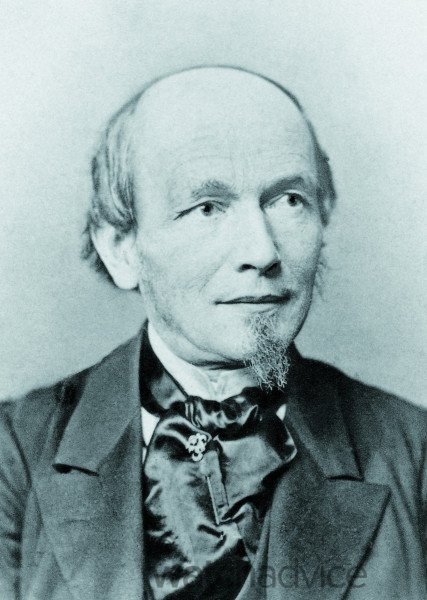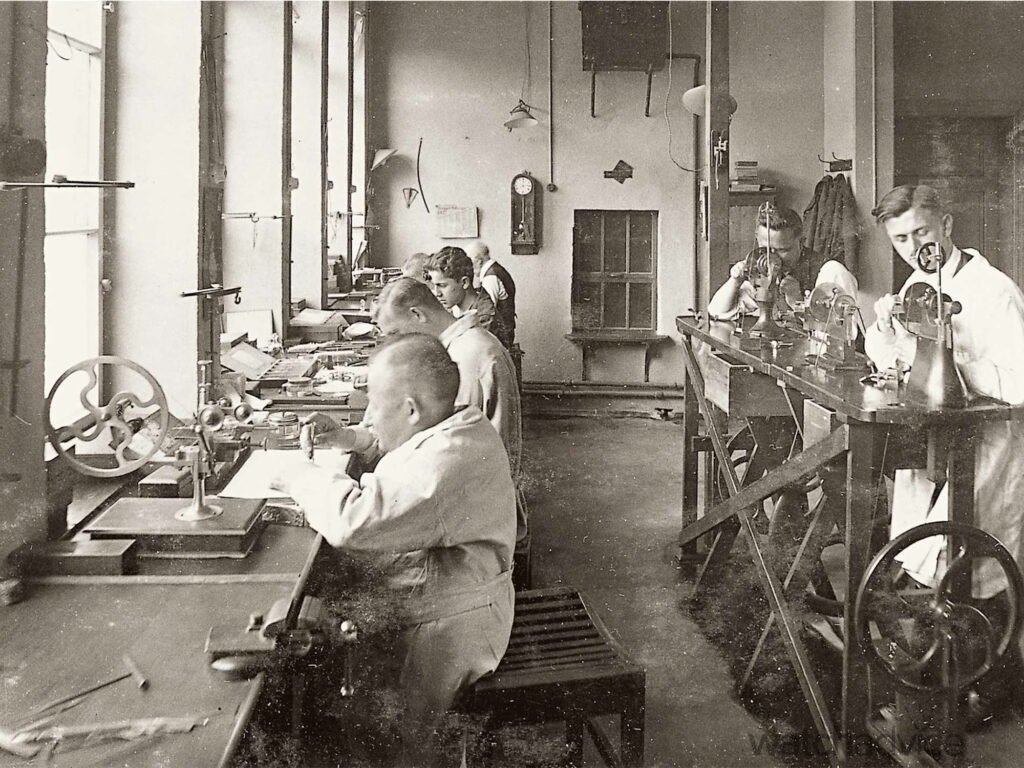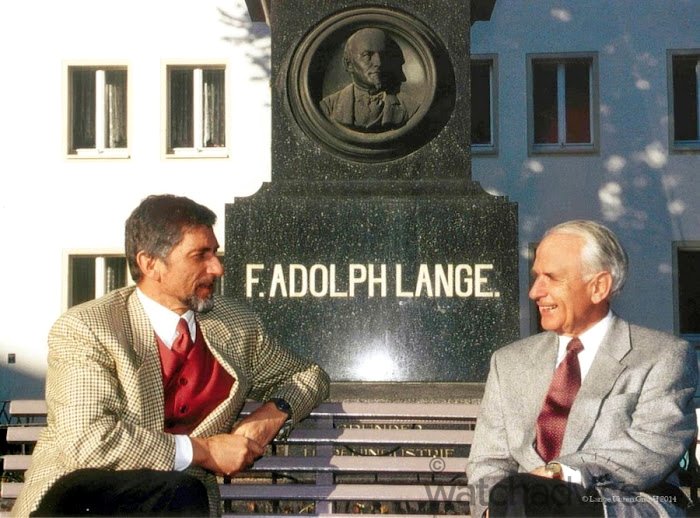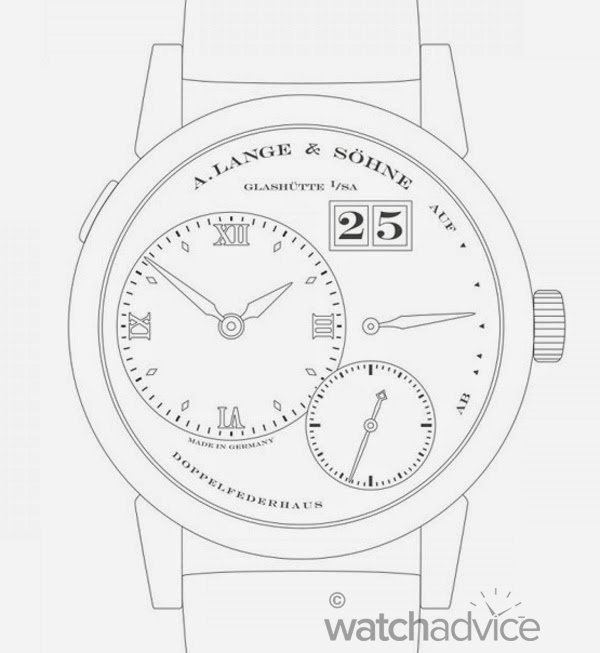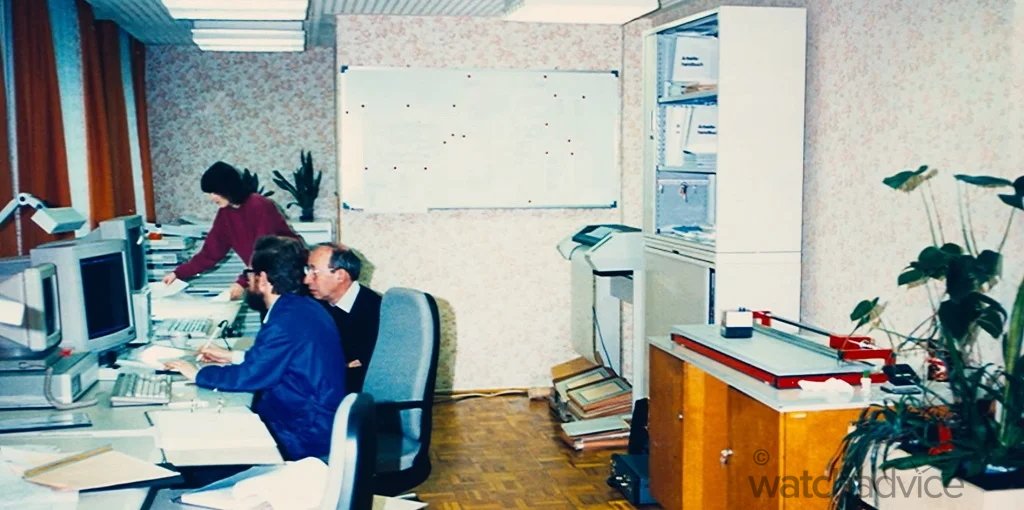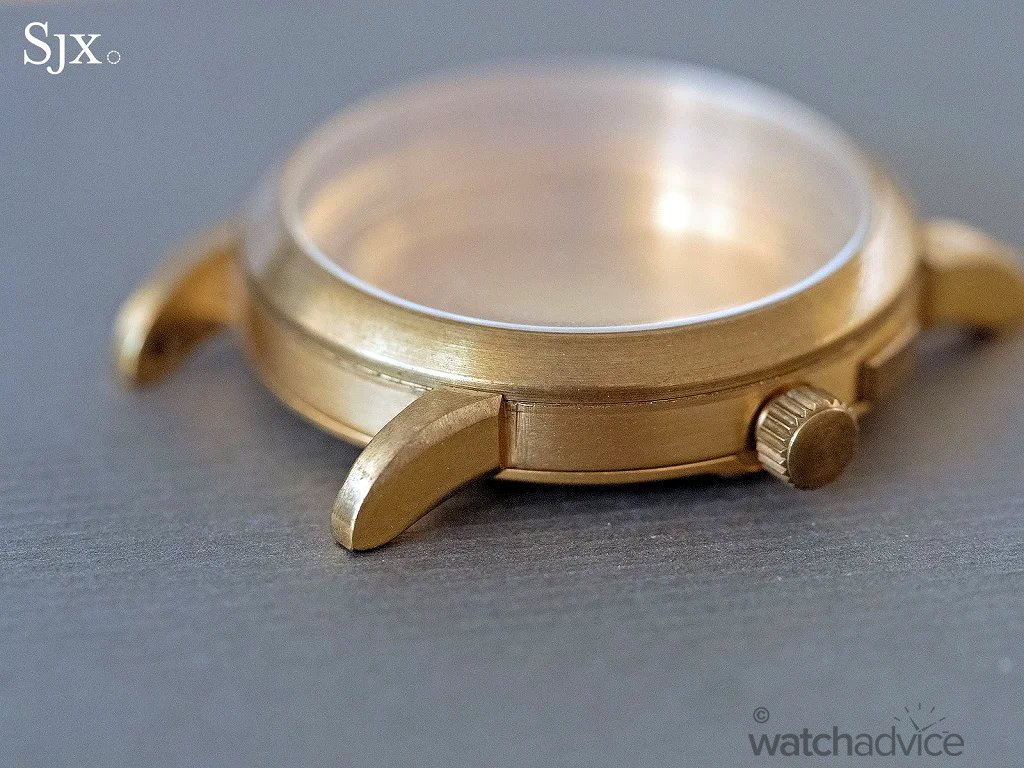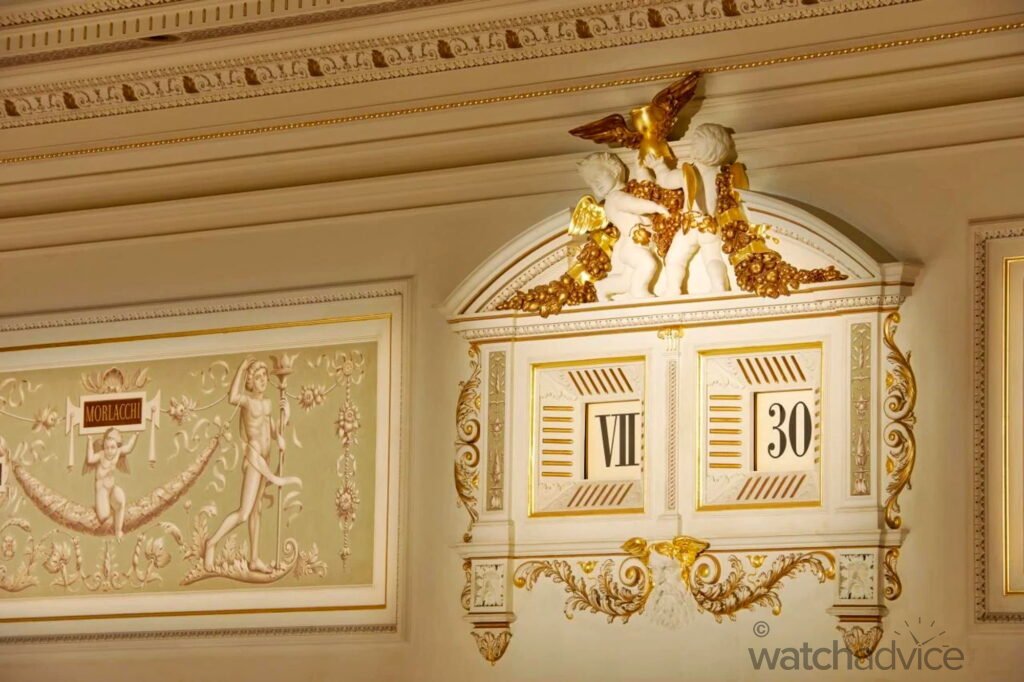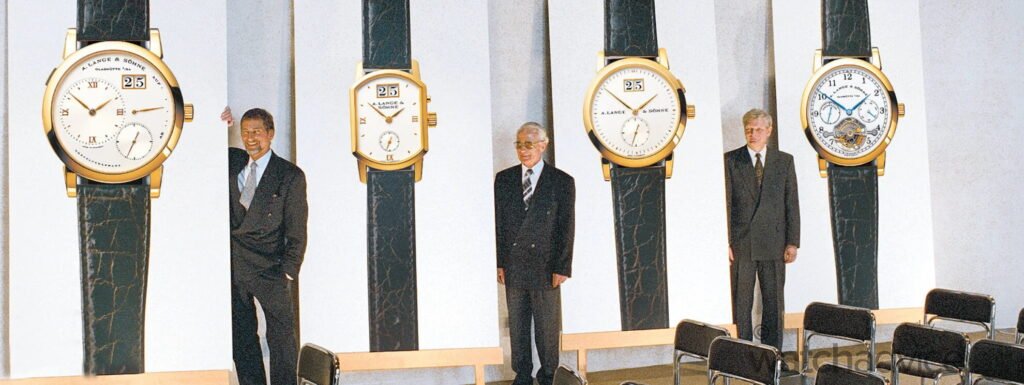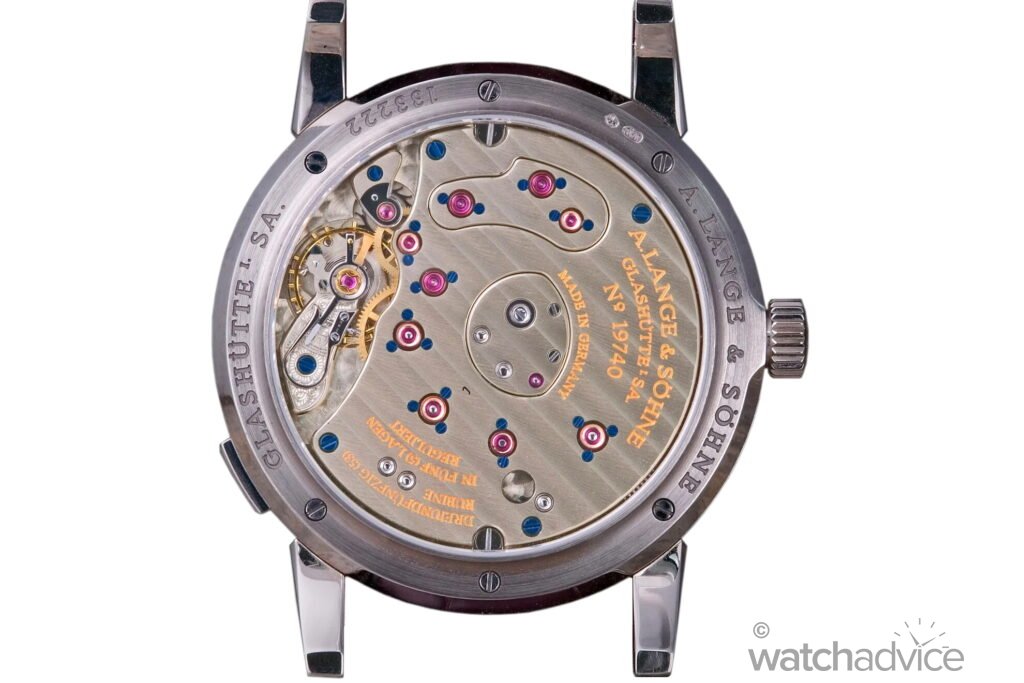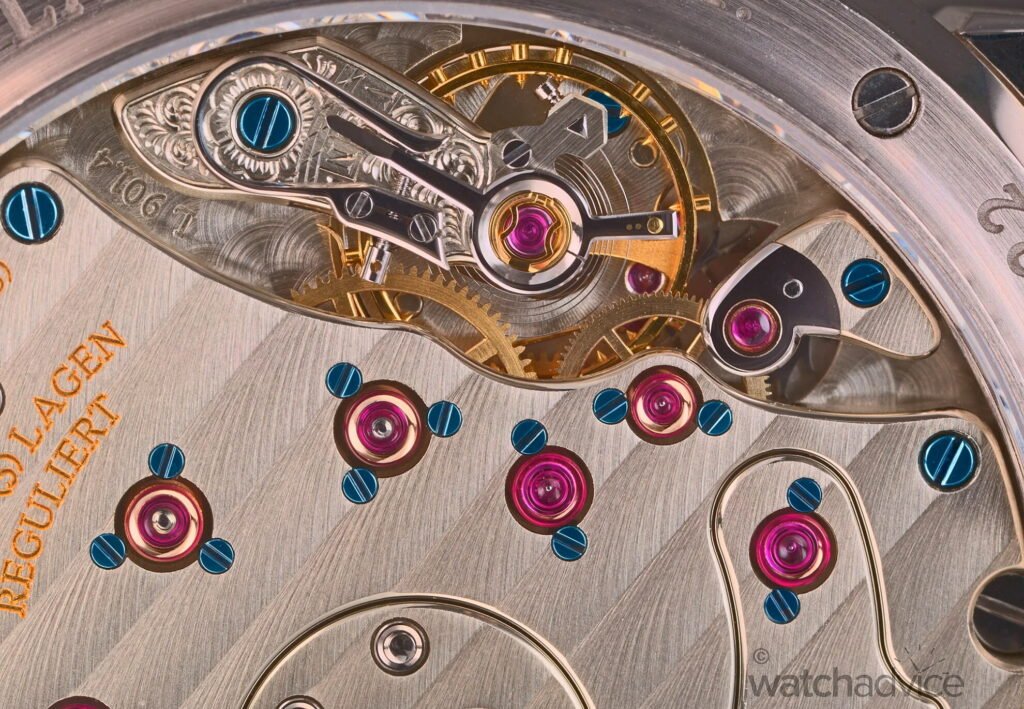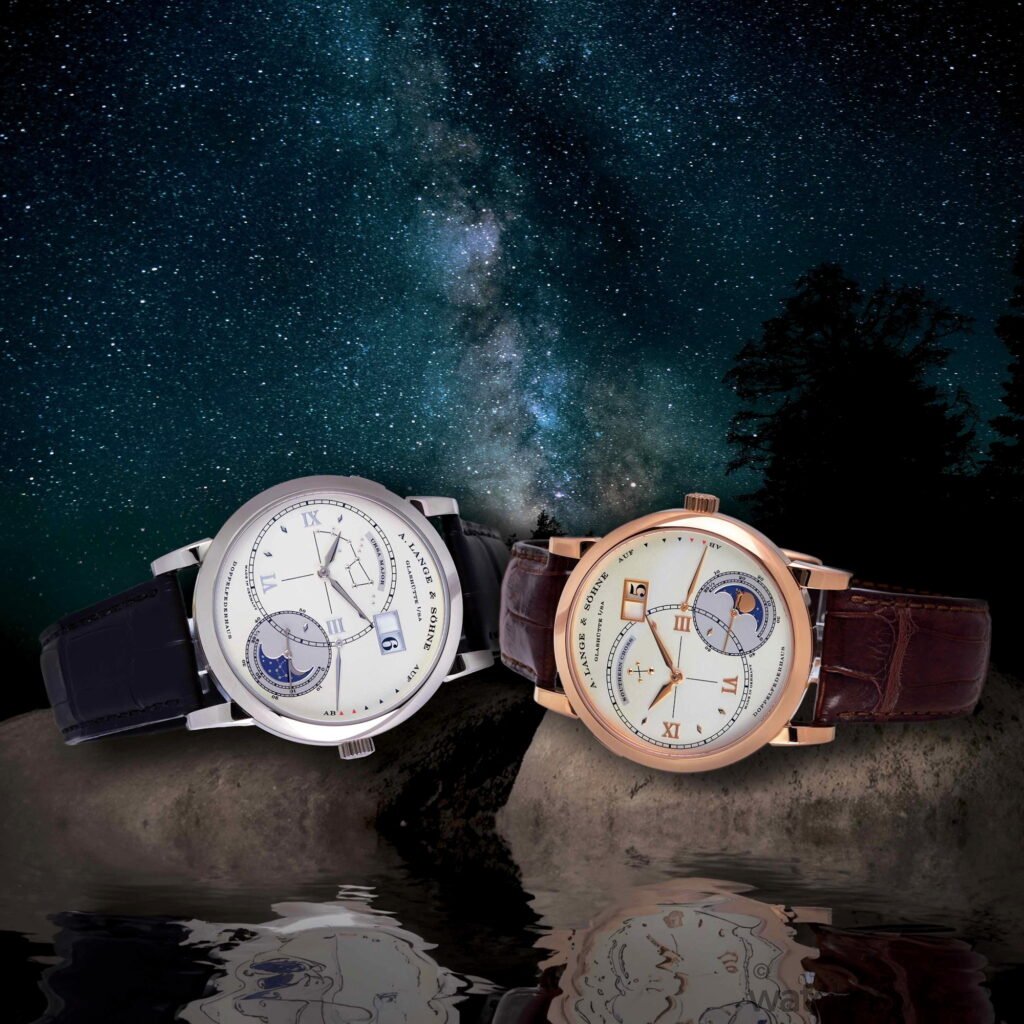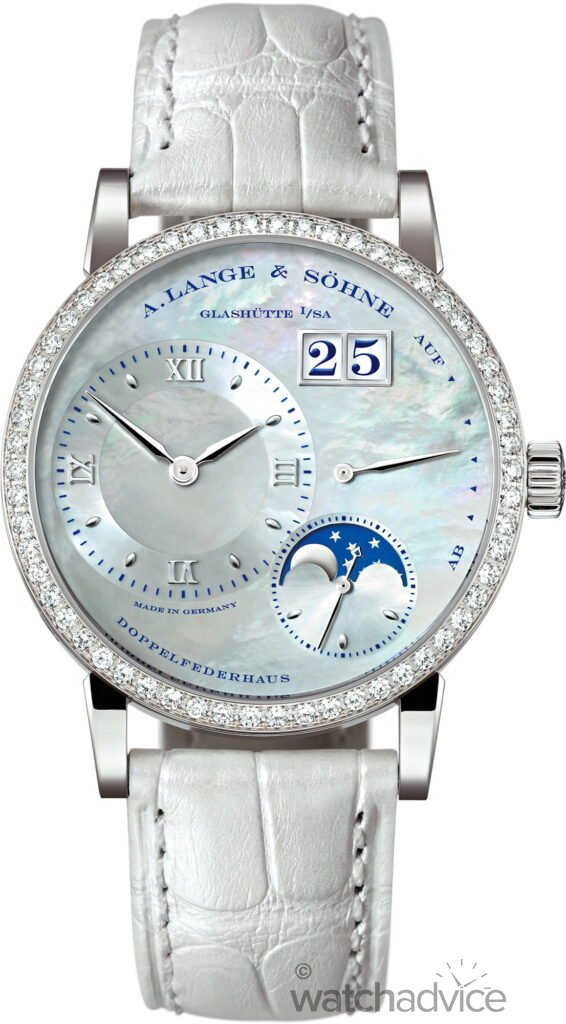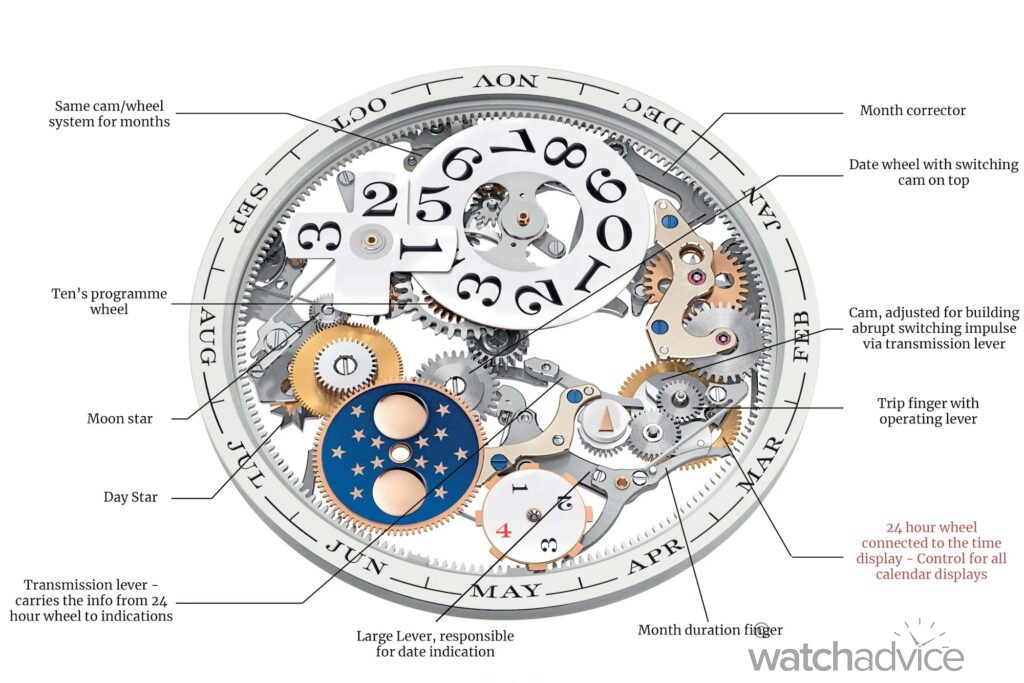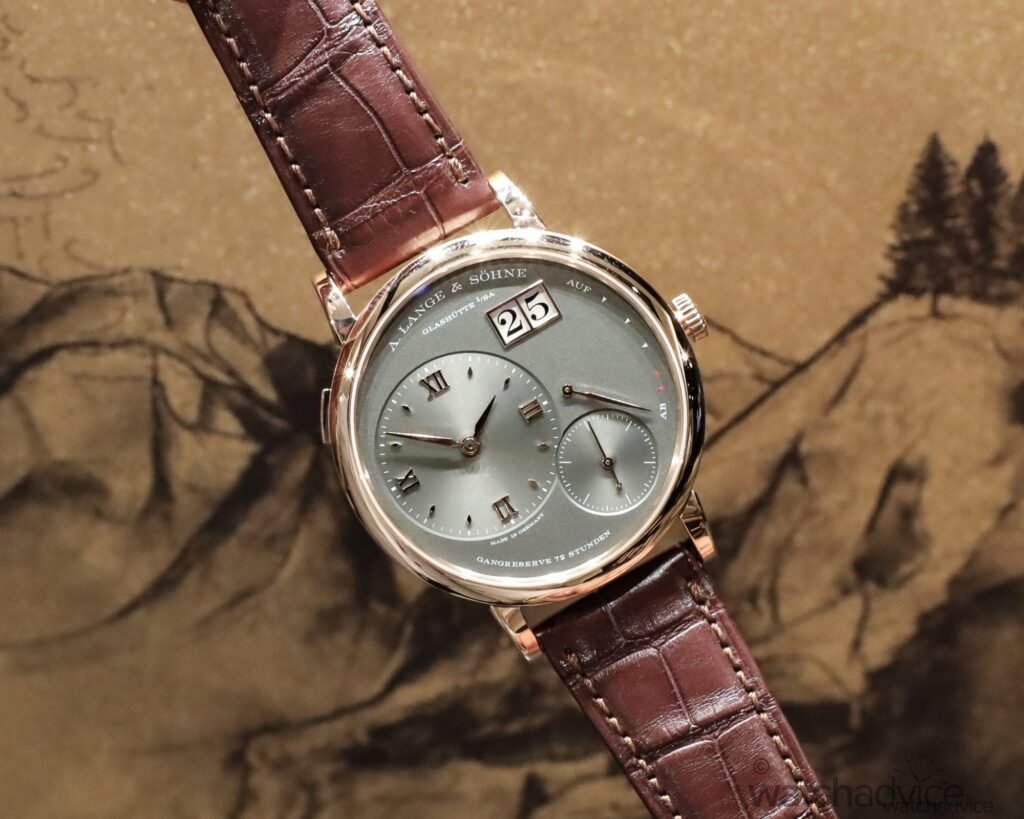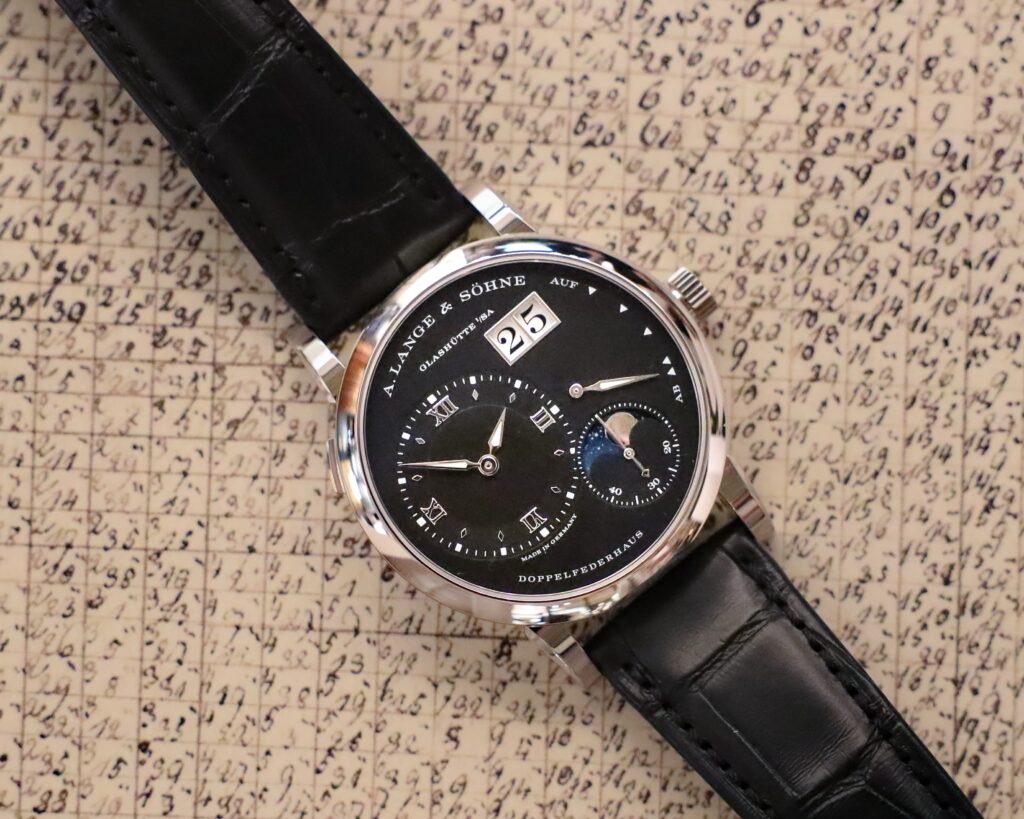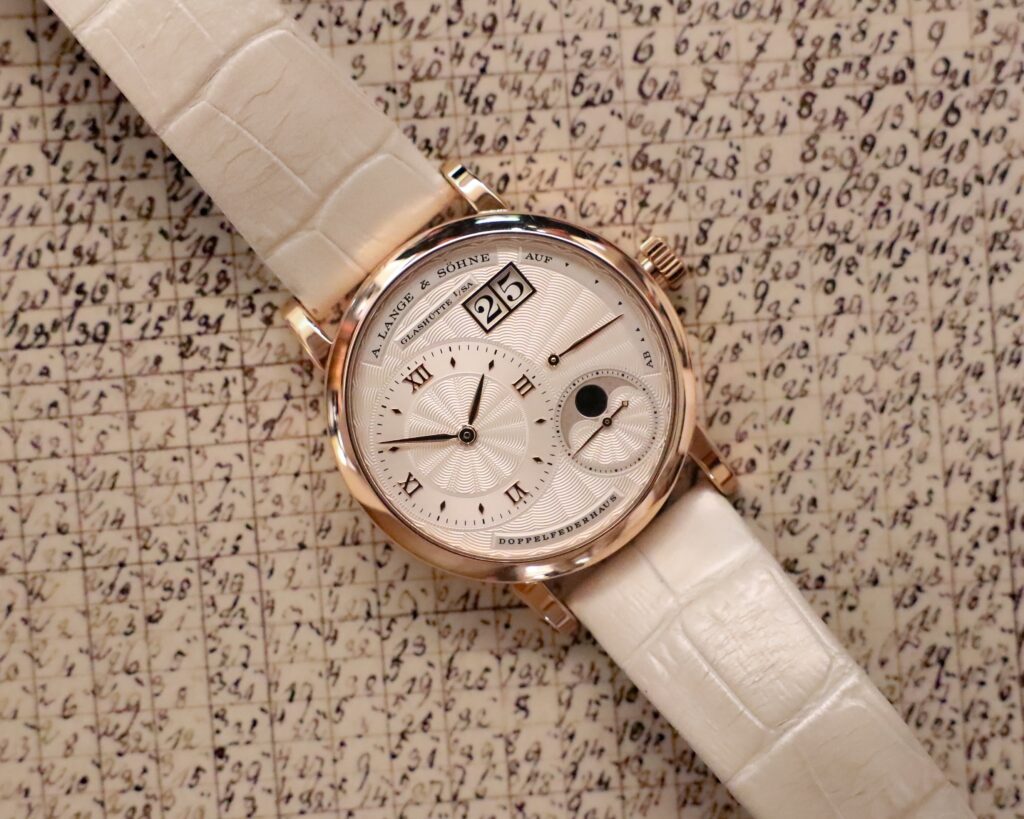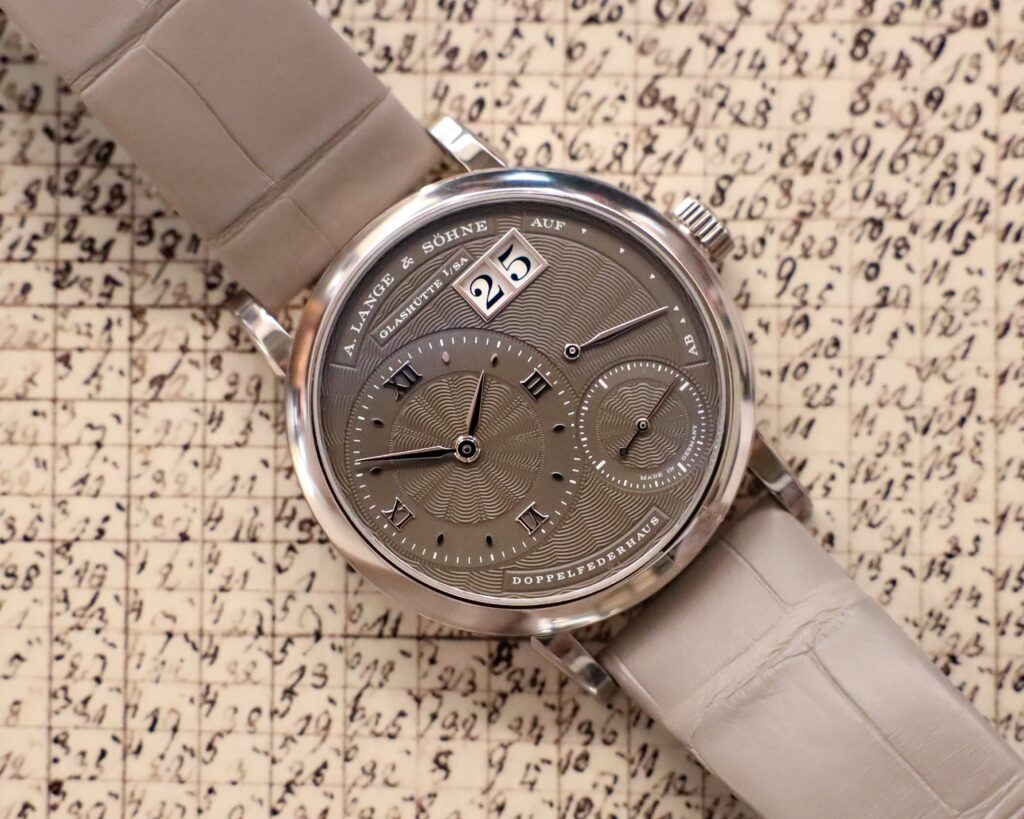The Lange 1 does much more than tell the time. It has a story of heritage restored, a brand reborn after hardship and now a future defined by excellence.
A. Lange & Söhne’s Lange 1 is an icon and one of the defining pieces in watchmaking history. When the Lange 1 was first introduced, it played a major role, not only in the rebirth of A. Lange & Söhne, but also German watchmaking, whilst upholding the uncompromising precision of Saxon watchmaking tradition.
To understand just how important the Lange 1 timepiece was for the brand, we first need to take a look at A. Lange & Söhne’s history.
A Brief History of A. Lange & Söhne
A. Lange & Söhne was founded in 1845 by Ferdinand Adolph Lange in Glashütte, Germany. Born in 1815, Adolph Lange, in his younger years, studied with renowned master watchmaker Johann Christian Friedrich Gutkaes, who quickly recognized and encouraged his watchmaking talent. After studying and working abroad for several years, Ferdinand Adolph Lange returned to Dresden, the capital of the German state Saxony, in 1841.
His arrival in the city was very timely, as a new railway was built between Dresden and Leipzig in 1839. This form of transport changes not only the culture of travelling, but also the perception of time. What previously might have taken from “Tuesday morning” until “Wednesday evening” by carriage is now something much more precise. This meant that precise timepieces were now of high importance.
This new railway also influenced the design of many pocket watch dials. For example, the minute scale between the hour markers is based on a railway track. In 1843, Ferdinand Adolph Lange started to repeatedly write to the Saxon government to promote his idea of “the founding of a new industry for the impoverished people of the Erzgebirge”. He has worked out everything about his new business model down to meticulous detail. In 1845, the Saxon government gave the go-ahead for Ferdinand Adolph Lange’s business proposal, as A. Lange & Söhne quotes, “to hire and train 15 apprentice watchmakers in impoverished Glashütte, while also receiving a supplement of 5,580 thalers, repayable between 1848 and 1854 in seven instalments – and an additional 1,120 thaler to buy tools”.
“To get through the difficult first few years, Ferdinand Adolph Lange puts literally everything he owns into his fledgling business – and also takes on heavy debt. He never gives up hope of success – and time proves him right.”
A. Lange & Söhne
With the backing of the Saxon Government, Ferdinand Adolph Lange and his wife Antonia relocates to Glashütte. On the 7th of December 1845, Ferdinand Adolph Lange welcomed his first apprentices into the workshop, and thus the beginning of A. Lange & Söhne watch company. The name “A. Lange & Söhne” meant “A. Lange & Sons”.
All new beginnings are extremely tough, and this was no exception. Teaching the apprentices from the region were much more difficult a task than once first thought, which meant that watch production moved slowly. However, after some time, A. Lange & Söhne earned a reputation for technical precision and innovation, standing out from the crowd by creating watches that combined elegance and robust engineering.
A. Lange & Söhne Cease of Operations
In 1948, A. Lange & Söhne went through a difficult stage, as it was seized and nationalised by the Soviet-controlled East German government following World War II. This means that the government took control of privately controlled companies, industries, and assets.
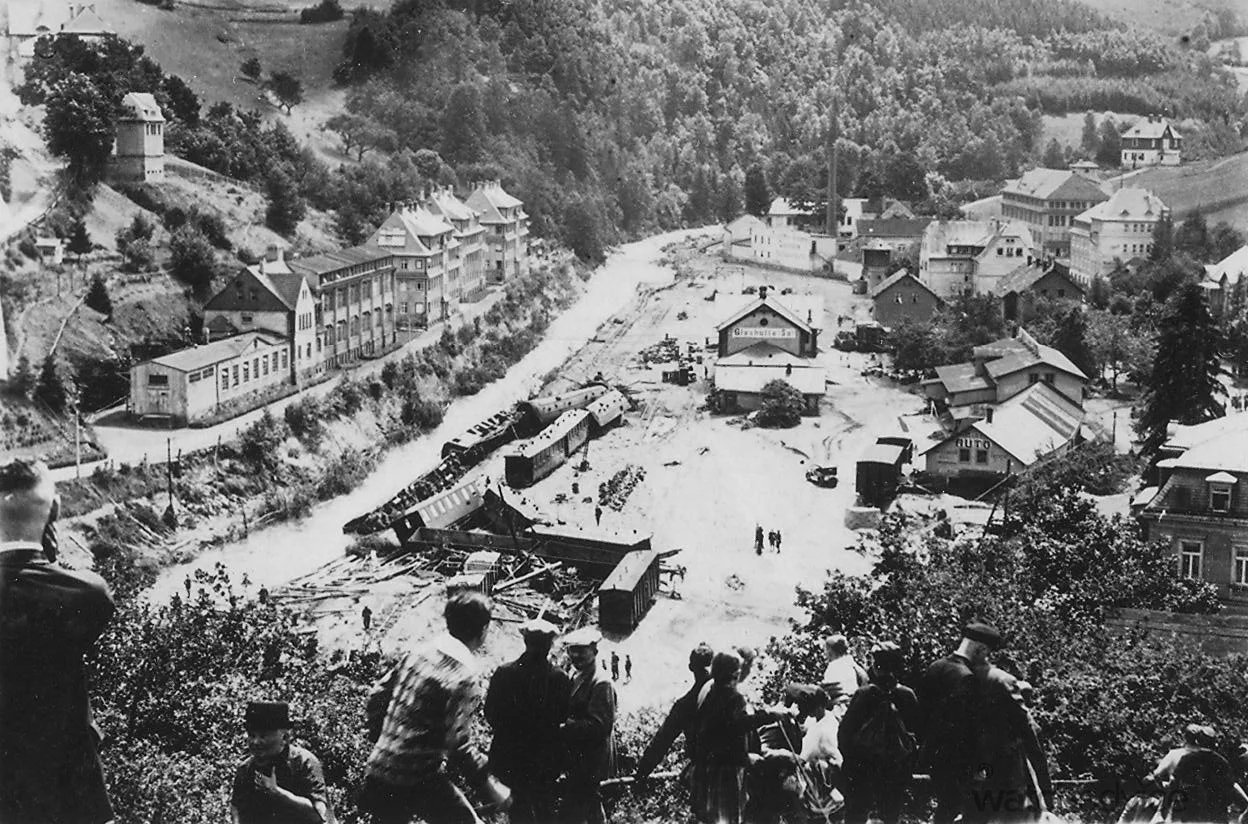

The watchmaking region of Glashütte also experienced massive wartime destruction, adding further fuel to the fire of privately owned watch companies in the region. Unfortunately, the A. Lange & Söhne facilities were also heavily damaged from air-raids. East Germany’s nationalisation meant that A. Lange & Söhne would consolidate the business into a new state-run entity named VEB Glashütter Uhrenbetriebe (GUB). This effectively ceased operations for “A. Lange & Söhne” as an independent brand.
Rebirth of The Brand
That is until 1989. When the Berlin Wall fell, Walter Lange, the great-grandson of founder Ferdinand Adolph Lange alongside Günter Blümlein, reclaimed the A. Lange & Söhne name and re-established the brand. Setting the company up again was certainly no easy task. To make A. Lange & Söhne a competitor against the Swiss giants at the time, when the quartz crisis had been averted, and mechanical watchmaking was once again starting to flourish. With these brands already being established, A. Lange & Söhne had to make up for lost time and quickly make a name for itself.
The Birth of an Icon – The Lange 1
This was also the perfect time for the brand to start anew, with a blank canvas, and create something extraordinary while upholding the values and heritage set forth by Ferdinand Adolph Lange. In 1994, A. Lange & Söhne did just that by making the Lange 1 timepiece.
A. Lange & Söhne states that “While-in general-Swiss Watch Industry was busy adding complications on top of each other and relying on traditional designs without foreign competition; something entirely different was cooking across the border.” Following the re-registration in 1990 and 4 years of intense hard work, A. Lange & Söhne introduced their first collection, in which the Lange 1 was a model. The whole collection featured four different models and three separate calibre movements, all released on the evening of October 24th 1994.
The creation of A. Lange & Söhne’s Lange 1 involved some high-profile watchmakers such as horological designer Hartmut Esslinger, watchmakers Helmet Geyer, Thierry Nataf and Kurt Klaus. This team knew that the Lange 1 had to be special, especially if the timepiece was going to compete with the Swiss watch market. A timepiece that was distinctive, memorable and aesthetically pleasing.
After A. Lange & Söhne was re-established in 1989, the designers and watchmakers spent the next few years designing the brand’s first collection, with the Lange 1 being of the utmost importance. When the asymmetrical layout of the Lange 1 was finalised, the designers spent countless hours deciding where the indications would be and how they would look on the dial. The year’s hard work has ended with a product that is now iconic in the world of horology, a design that has been virtually untouched for 30 years!
The Lange 1 Design – Reference Model 101.001
One of the biggest issues that the designers faced was how to make the Lange 1 a truly modern version of A. Lange & Söhne, especially after its identity was lost for four decades. The designers need to step outside of the box of traditional watchmaking to create something unique, however, still stay true to the design cue’s of A. Lange & Söhne’s past.
In order to create a stand-out design for a watch, one must first focus on one of the most important aspects of a watch: the case design. While the Lange 1 case design isn’t as exceptional as its dial, it features minute details that give it the elements of luxury and elegance and comfortability. Since the Lange 1’s creation in 1994, the case design has remained faithfully accurate even to today’s A. Lange & Söhne Lange 1 models (besides the date pusher changing sides on the case!).
The original reference 101.001 Lange 1 models came with a case size of 38.5mm x 9.8mm thickness. The case featured elegantly curved and bevelled lugs, not only to look aesthetically pleasing but also to provide a comfortable fit on the wrist. A standout feature on the case was that these lugs were separately finished and notched from the case. The case features a sandwich-type construction whereby it’s built on three levels. The top and bottom (bezel and case back) have a polished finish, while the middle case band has a brushed finish. With this alternating finishing technique, it provides for a very aesthetically pleasing look.
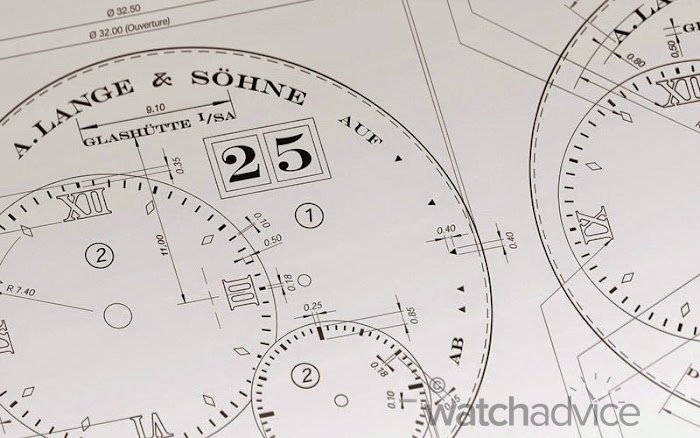
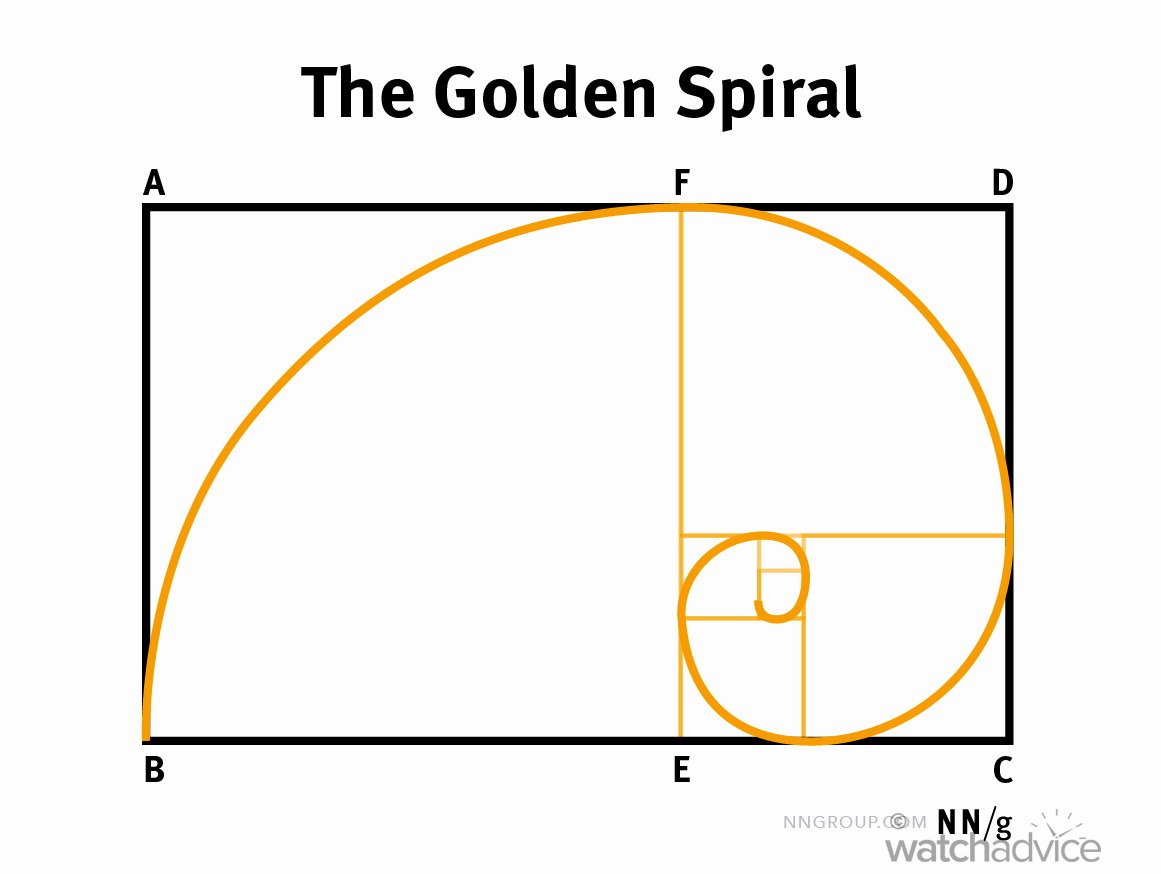
The most iconic design element of the Lange 1, however, is, of course, the asymmetrical dial layout. The designers and engineers at A. Lange & Söhne came up with the idea to make this layout from the “golden ratio” or “golden spiral” principle. By using the golden ratio as part of Lange 1’s design, the dial will have a visual harmony, regardless of the asymmetric design.
Another standout design element of the Lange 1 is the oversized date feature at 1 o’clock. The large date feature was originally a Jaeger-LeCoultre invention, but Gunter Blumlein had a unique take on the design. The inspiration behind the big date window comes from the five-minute digital clock at the Semper Opera House in Dresden. Coincidentally, this clock was made by Ferdinand Adolph Lange’s tutor Gutkaes.
As we know, A. Lange & Söhne’s attention to detail is impressive, but it extends beyond just their designs. If you ever wonder why the Lange 1 always has the date set to the 25th in the press photos, it’s due to a historical moment when the watch was released. A. Lange & Söhne state, “On 24th October 1994, the print was the only communication tool for the watch industry. When the event took place in Dresden Castle that day, the press could only announce the watches on 25th. So, all of the watches’ date was set to 25 to be accurate with the date they were shown”.
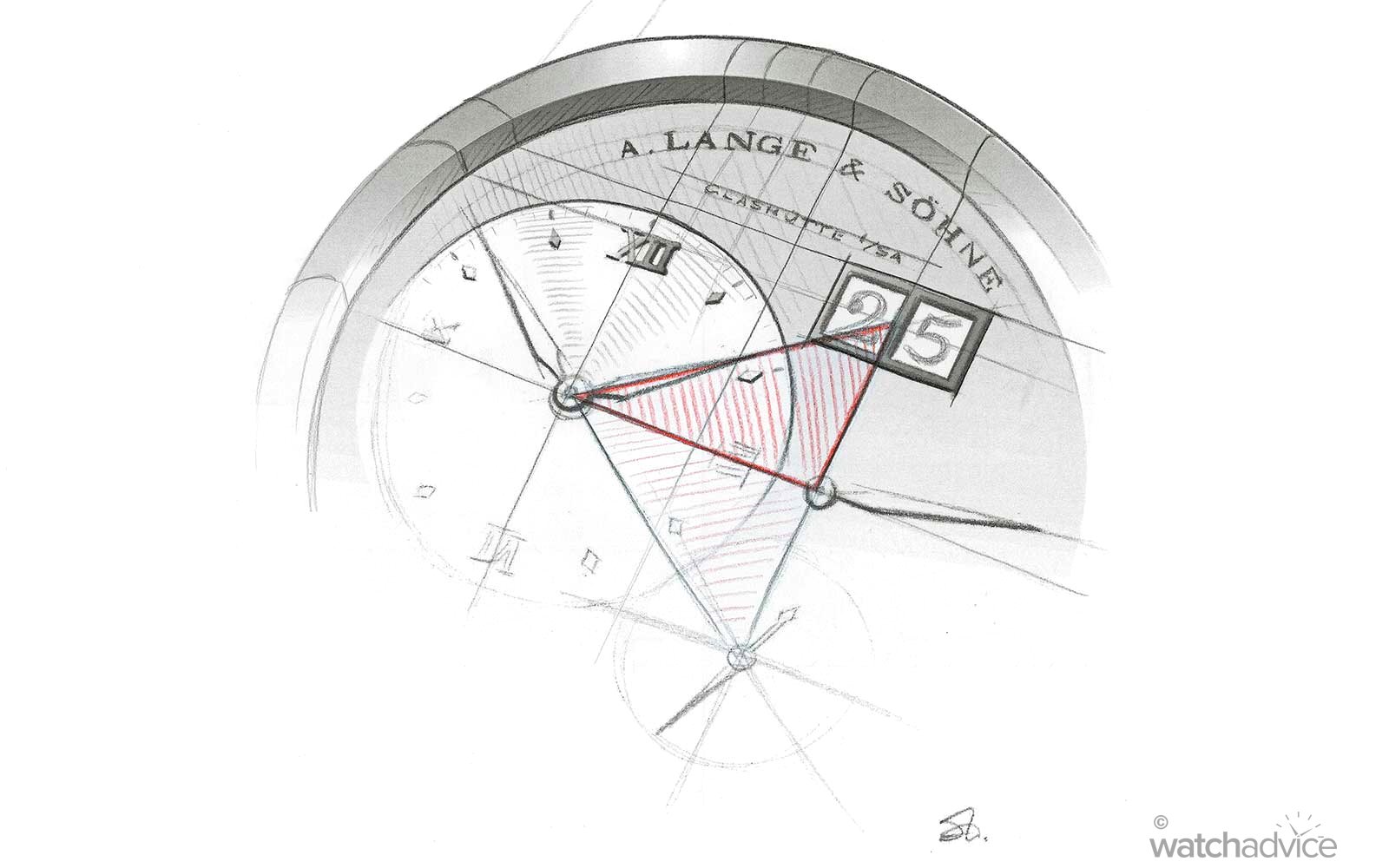
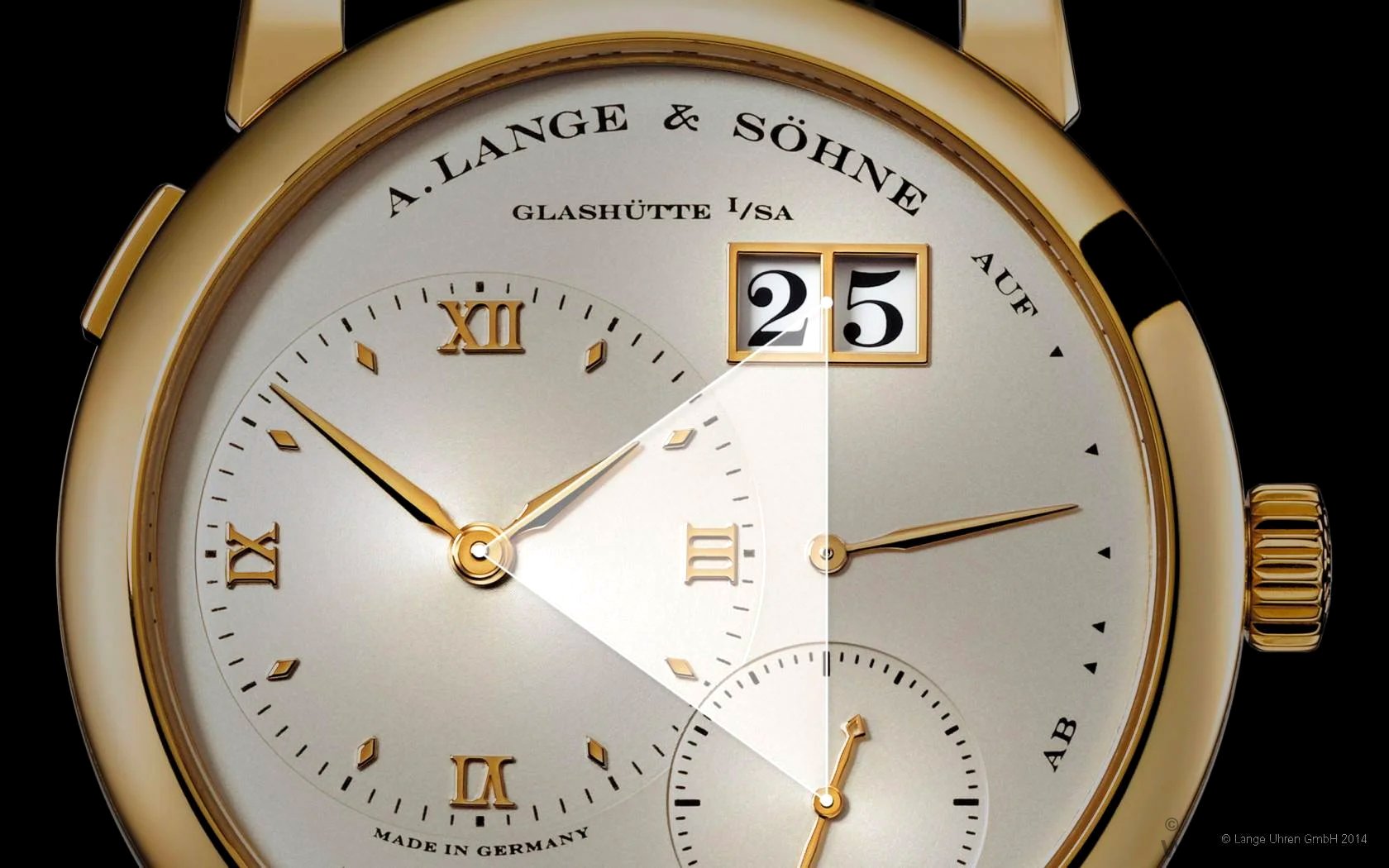
While the golden ratio inspires the overall elements on the dial, the rule of thirds also plays an important role in the design. A. Lange & Söhne state that “while the rule of thirds suggests when an image or object is divided into nine equal parts by two horizontal and vertical lines, the important elements should sit either on along these lines or their intersections. Employment of this principle what gives the comforting symmetry to Lange 1 while appearing random”.
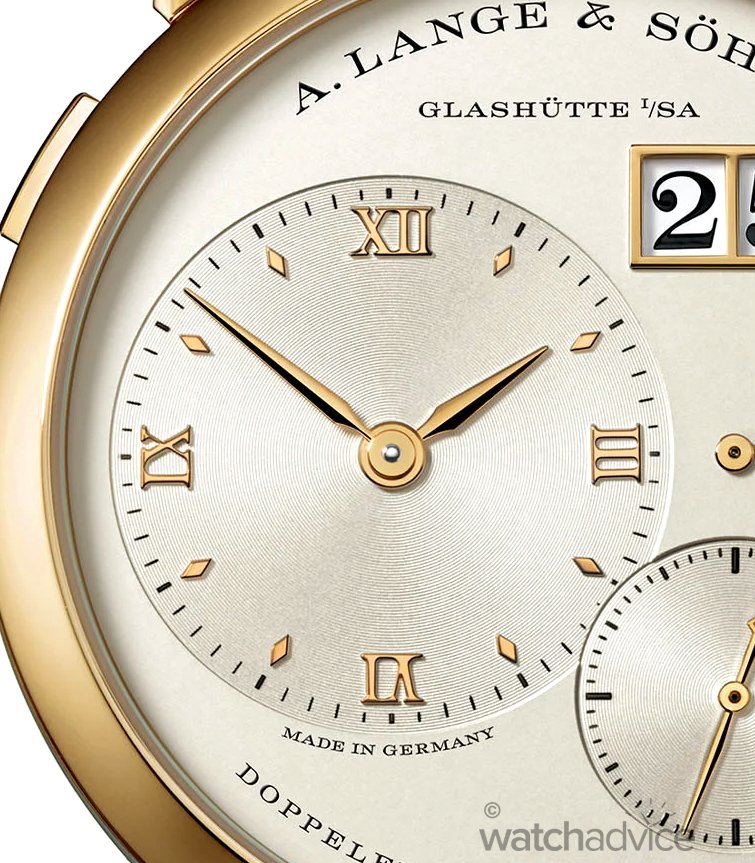
At the 9 o’clock position on the dial, we get the main time sub-dial. This sub-dial consists of two different hour indices. Roman numerals have been used for the 3, 6, 9 and 12 indices, while the rest are diamond-shaped. The indices come with mirror-polished and soft bevels, which glisten beautifully under light. The use of four Roman numerals on each of the quadrant positions also gives the time sub-dial a balanced design, perfectly in line with the meticulously calculated design of the overall watch.
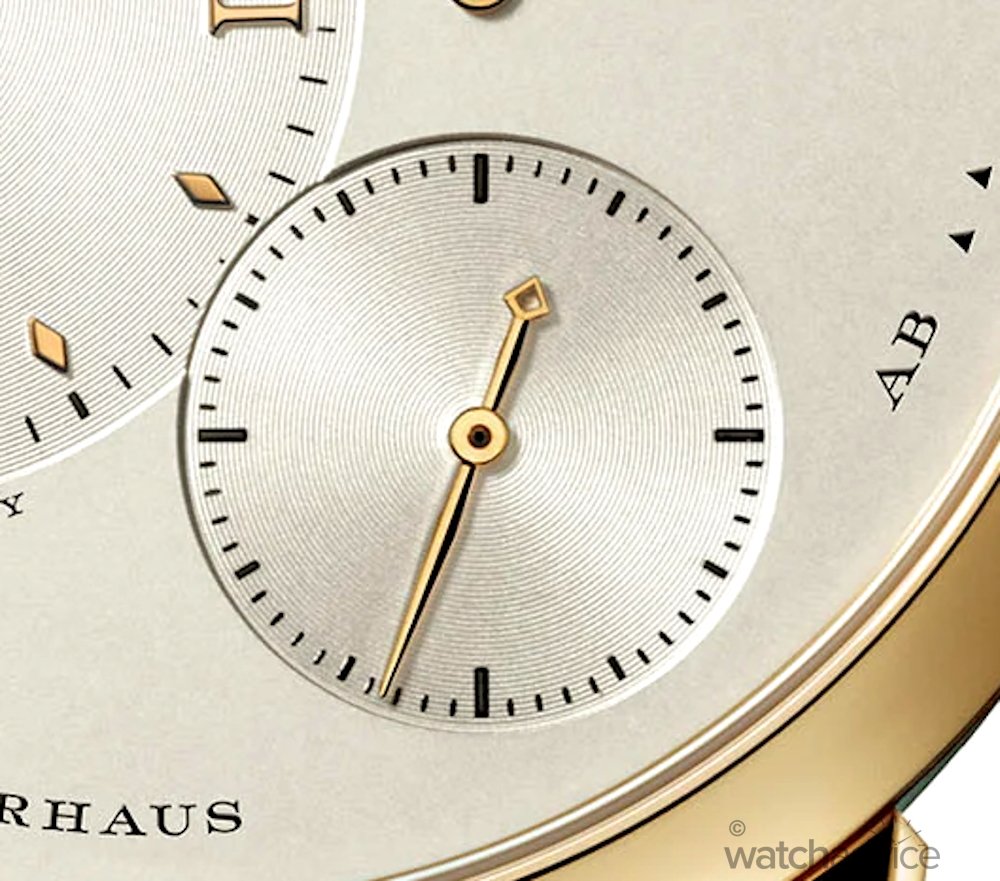
Between 4 and 5 o’clock is the constant seconds sub-dial, which is displayed simply through a seconds track and sword-like hand. Sitting above the constant seconds sub-dial is the power reserve indicator at 3 o’clock. This indicator is shown in the most simplistic form with minimal visual elements. The power reserve is indicated through five triangles, each measuring 0.40mm in diameter in height and width. The distance between the triangles is also not equal, but once again, it is executed to show a high level of attention to detail. When the Lange 1 movement is fully wound, it offers 3 days of power reserve. It takes approximately 1.5 days for the indicator to go to the third triangular marking and then another 1.5 days to get to the 5th triangular marking.
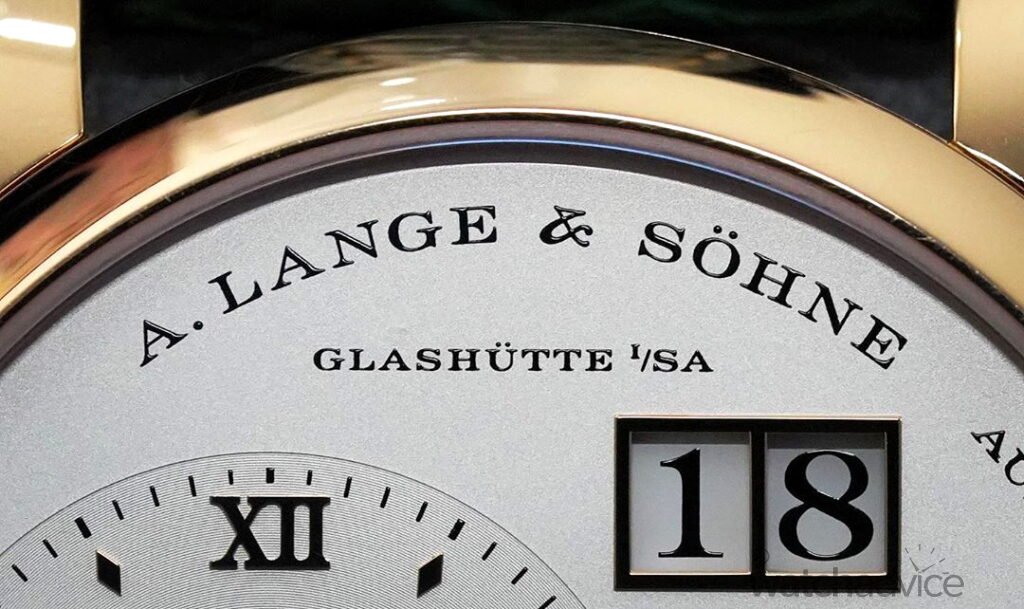
If we take a much closer look at the Lange 1, we can see further details that help to separate the sub-dials from the main dial. Firstly, the main dial comes with a grained finish, which gives it a matte-like look. The primary time subdial and the constant seconds sub-dial have fine concentric circles whilst also adorning a sunburst finish. It is said that there are a total of 153 concentric circles on the time sub-dial (research by @thewindingstem and @handwound). When you look at the dial as a whole, these sub-dials stand out, with the sunburst effect playing beautifully with light against the matte-like grained dial background.
Lange 1 (Reference 101.001) – Calibre L901.0 Movement
The first movement used inside the Lange 1 was a manual-wound Calibre L901.0. As the movement’s name suggests, the 90 denotation stands for when the movement was first sketched. This was incidentally also the first modern movement built by A. Lange & Söhne.
The movement wasn’t completely in-house, however. The Calibre L901.0 takes the gear train from Jaeger-LeCoultre’s calibre 822 movement, which the engineers at A. Lange & Söhne then heavily modified to suit the design of the Lange 1. A. Lange & Söhne state, “This modification laid the grounds for what was going to be A. Lange & Söhne’s movement identity with German Silver three-quarter plate, blued screws, gold chatons, Glashütte ribbing (a bit wider than its Swiss counterpart) and hand-engraved balance cock. A modern interpretation of a 150-year-old tradition“.
The Calibre L901.0 has a 30.60mm diameter, 53 jewels, 9 gold chatons, and beats at a frequency of 3Hz (21,600 VpH) whilst giving out a power reserve of 72 hours thanks to the double barrel system in the movement. The regulating organ of the first Lange 1 models housed a Glucydur balance wheel with screws. The movement also used Breguet overcoil on the balance springs due to their positive effects on timekeeping.
Even though the Calibre L901.0 is a beautifully finished movement, as we all know now from the modern renditions of A. Lange & Söhne timepieces, the caseback of the Lange 1 reference 101.001 was closed for both the gold edition and steel (reference 101.005). This was quickly reversed; however, in 1995, a year after the Lange 1 was introduced, the brand released a reference model with a transparent case back, showing the beauty of the L901.0 Calibre movement.
1995 – Lange 1 With Transparent Caseback
Reference: 101.022
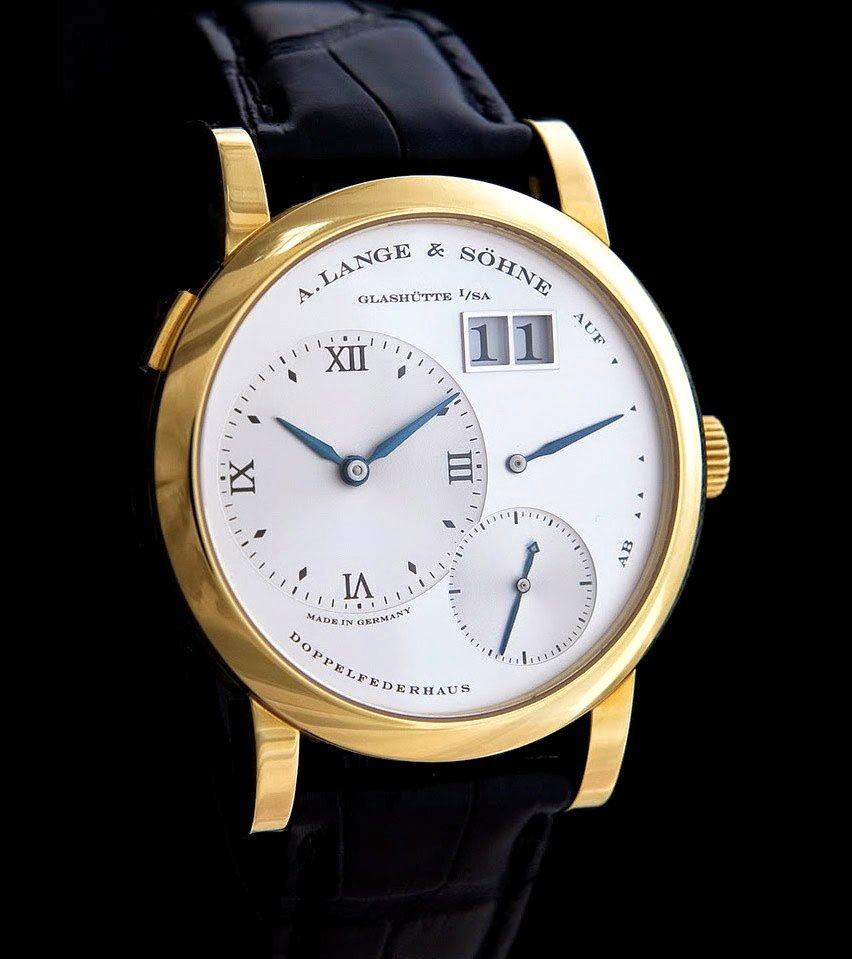
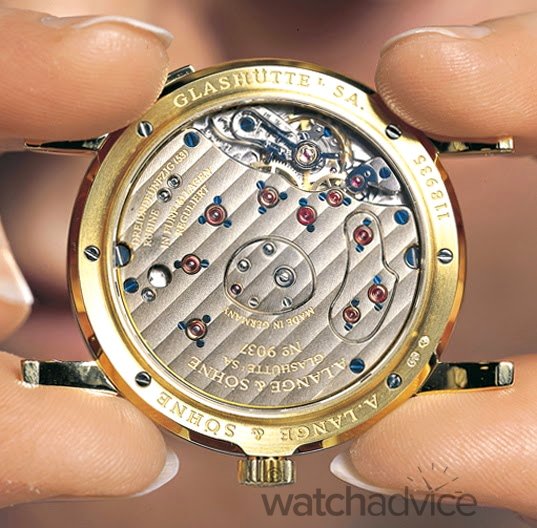
The first variation of the Lange 1 occurred a year after its debut. As mentioned previously, the main variation is the transparent case back, allowing the wearer to see the calibre L901.0 movement with it’s stunning finishing. Two different references were made available with the transparent casebacks.
The first is reference 101.021, which featured a yellow gold case with a beautiful champagne dial and yellow gold hands. The second, as shown in the pictures above, is reference 101.022, which came with a yellow gold case and, this time, an argenté dial. A. Lange & Söhne used blue steel hands to directly contrast the dial colour while also making it more colourful.
1997 – Lange 1 Discontinues Use of Solid Casebacks with
Reference: 101.027 and 101.031
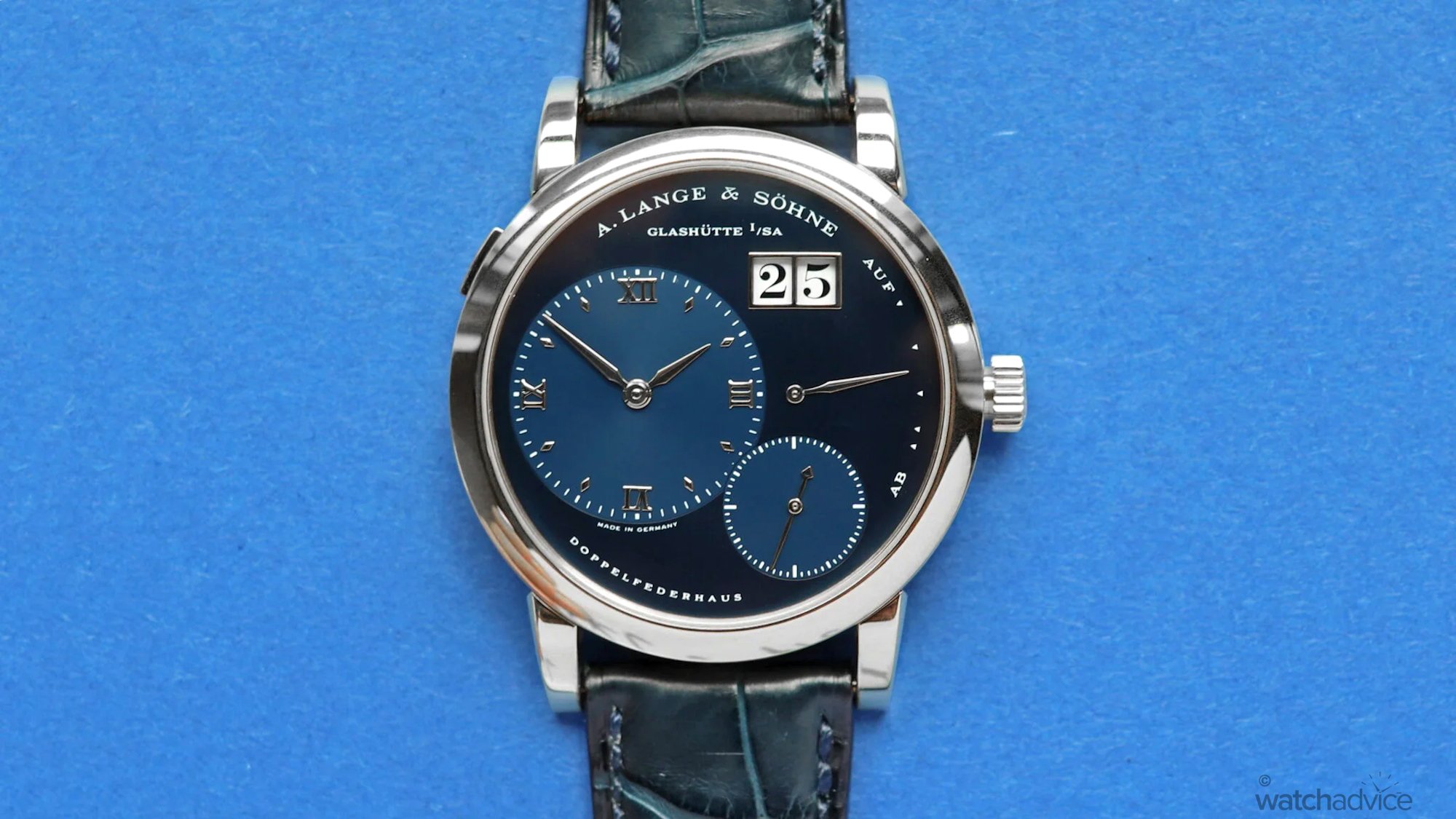
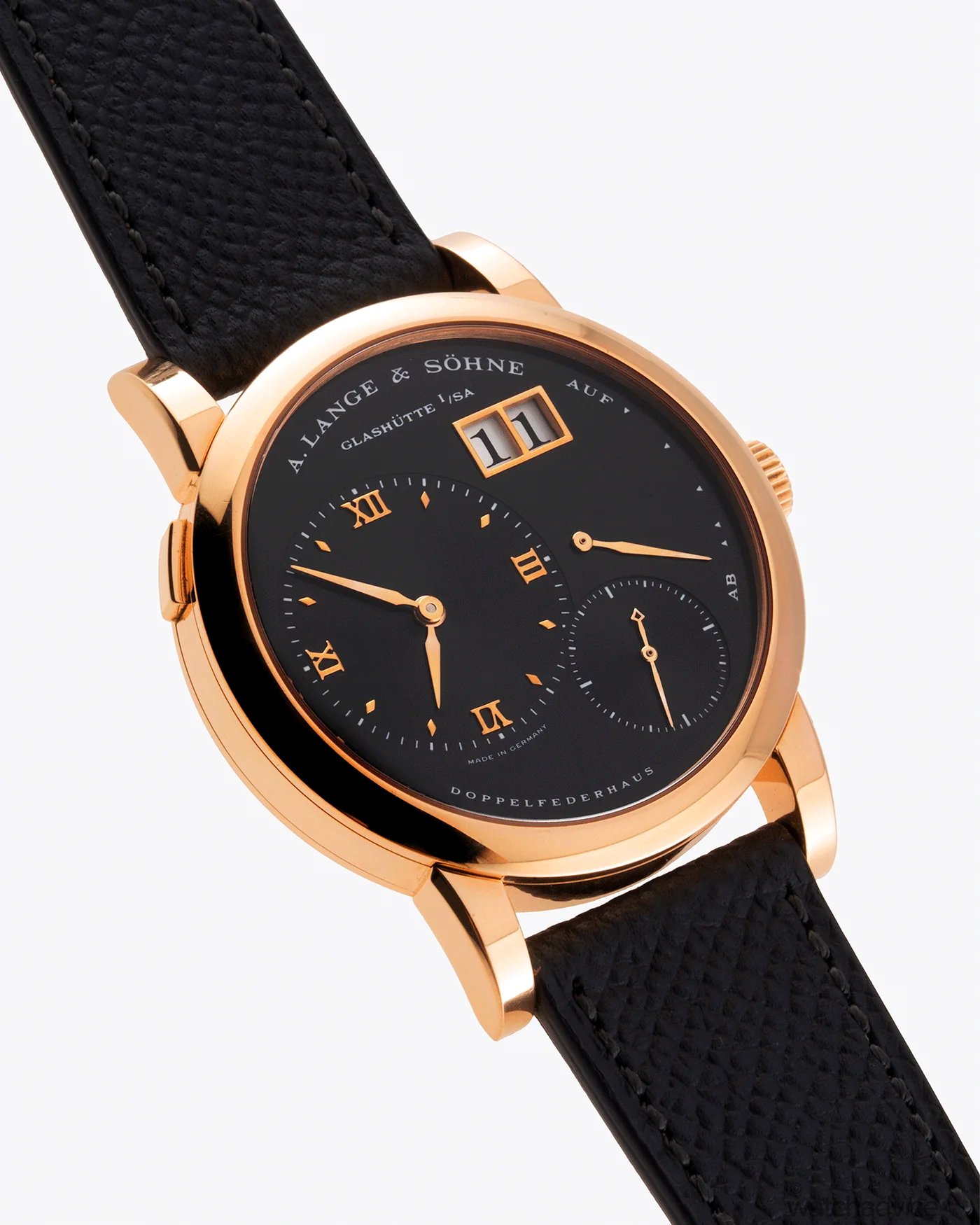
Two years after the inception of the Lange 1, A. Lange & Söhne made a permanent change to the design. That was to remove the solid caseback and instead use a sapphire crystal to showcase the movement. The 1995 change with transparent caseback would lead to this change, as the consumers would have loved to see the L.901.0 movement, and rightly so!
Two models were released to announce this permanent change, which was the Lange 1 reference 101.027 that was a white gold timepiece with a blue dial and contrasting white gold hands. The second was the reference 101.301, which featured a beautiful pink gold case with black dial.
1998 – Little Lange 1
Reference: 111.032
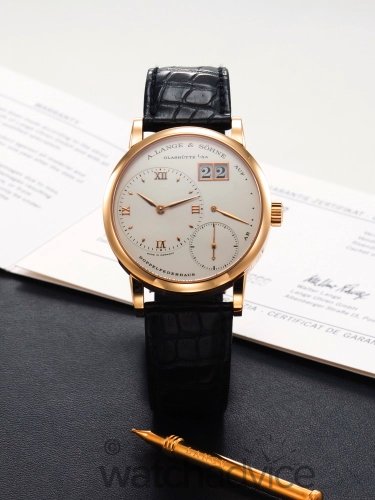
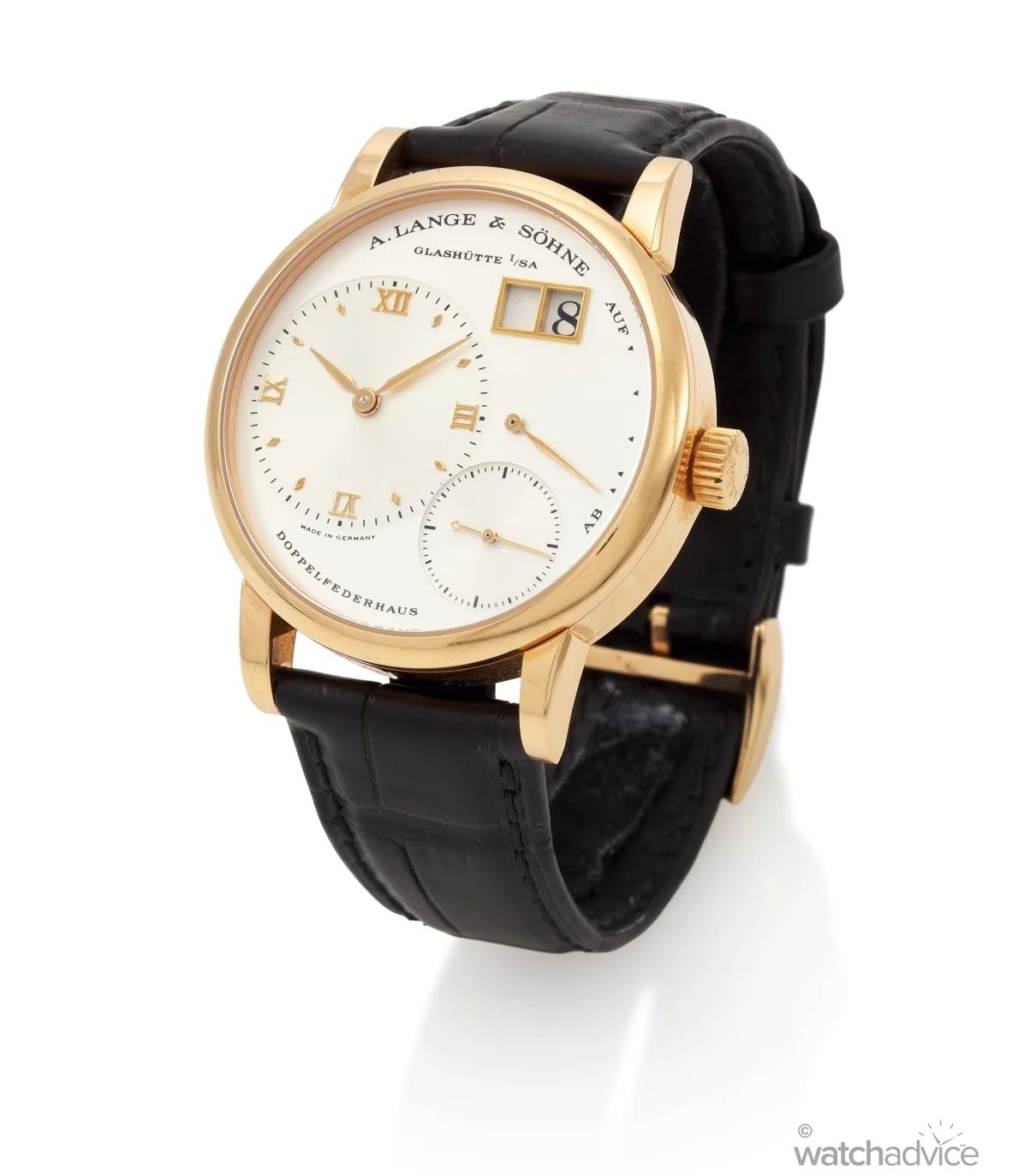
It’s hard to pinpoint exactly when the Little Lange 1 was first released by A. Lange & Söhne; however, resources say it was around 1998. The Little Lange 1, reference 111.032, was designed with a smaller case size of 36mm, hence the name. This smaller design was created to cater to those who were seeking a more compact and slimmer option while still keeping the iconic Lange 1 design intact.
Even though the reduction in size means it fits the female audience more by modern standards, the 1998 release was actually designed for men who preferred a smaller watch on the wrist. The new movement L901.4, while retaining the same characteristics of the L901.0 movement, was downsized to fit the new case. The other notable difference was the movement, and the case came with a recessed pusher to change the date, rather than a push button, as seen on the original Lange 1 models.
1998 – Lange 1A – Special 100 Pieces Limited Edition model
Reference: 112.021
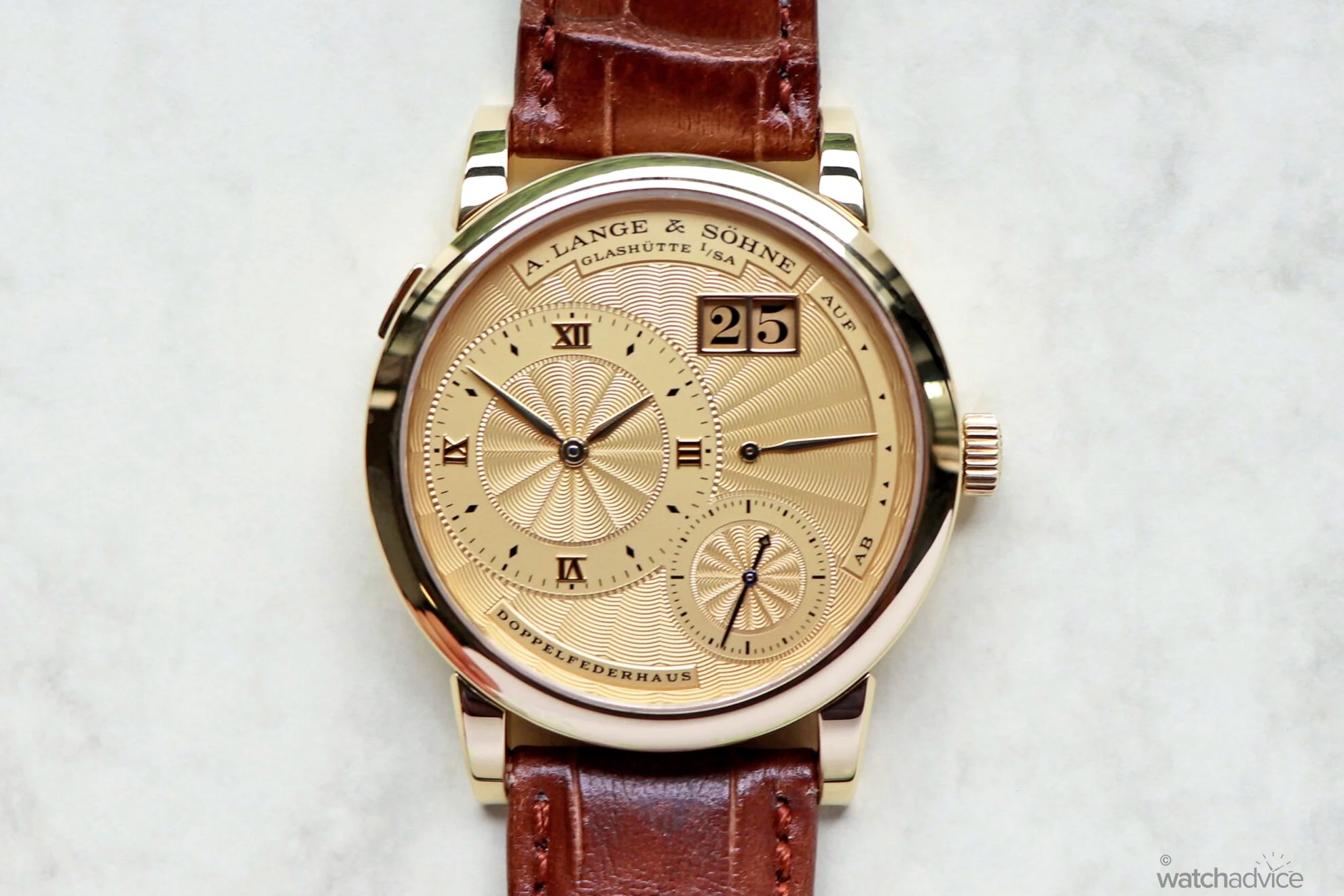
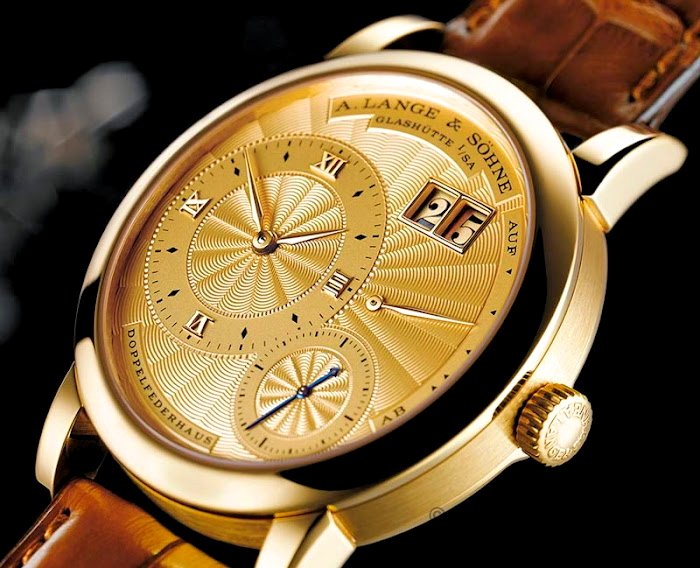
In 1998, A. Lange & Söhne created a second manufacturing building. To inaugurate this special moment, the brand released the Lange 1A, a special 100-piece limited edition model. This timepiece was certainly special, as it featured a stunning gold dial that had an “engine-turned” pattern.
The engine turning pattern, also more commonly known as the Guilloché pattern, was done throughout the different sections of the dial. This gave the watch a gorgeous look, with the main dial and sub-dials all getting their own Guilloché pattern. It was immediately sold out upon the watch’s release, and understandably so.
2000 – Lange 1 Tourbillon
Reference: 704.025 & 704.032
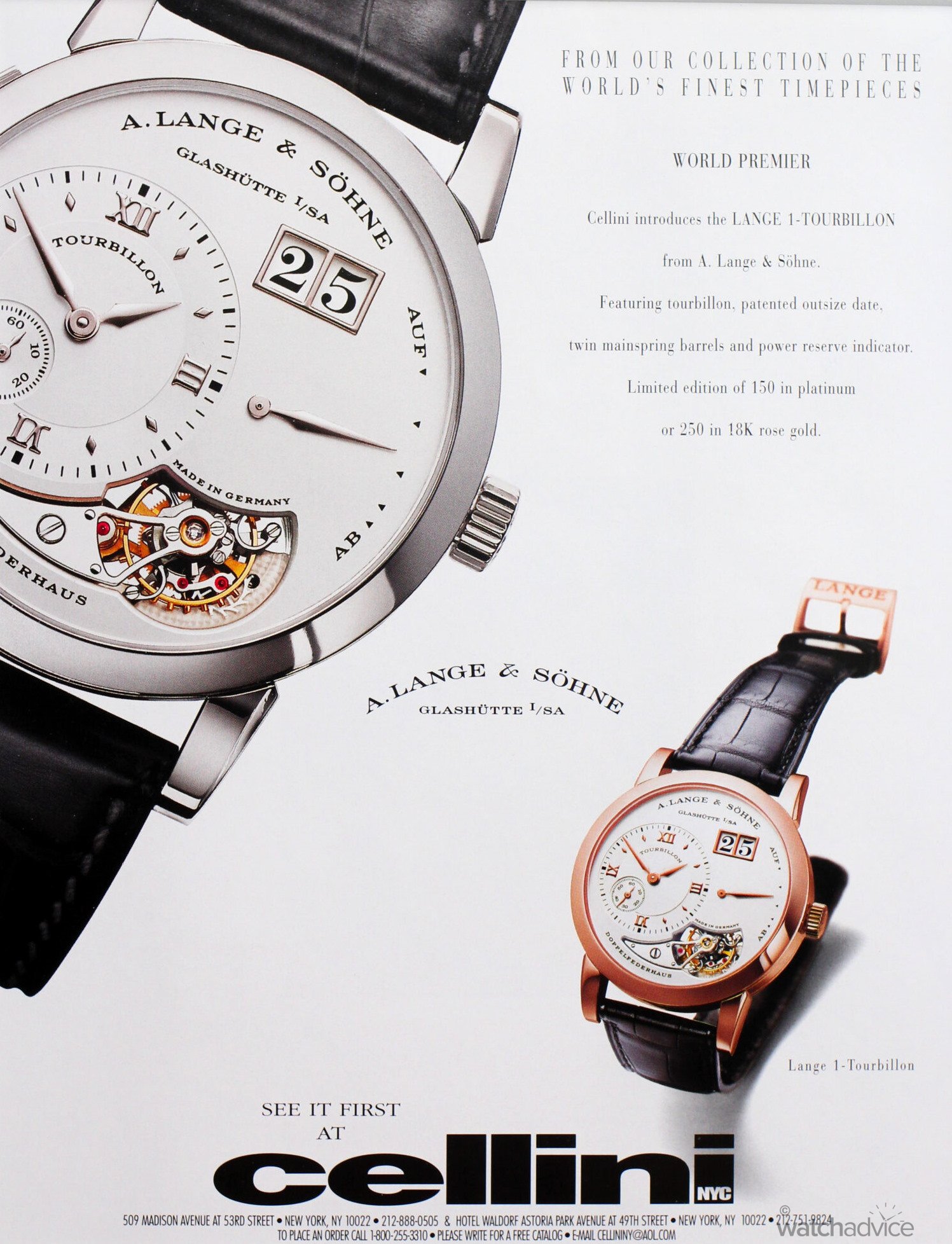
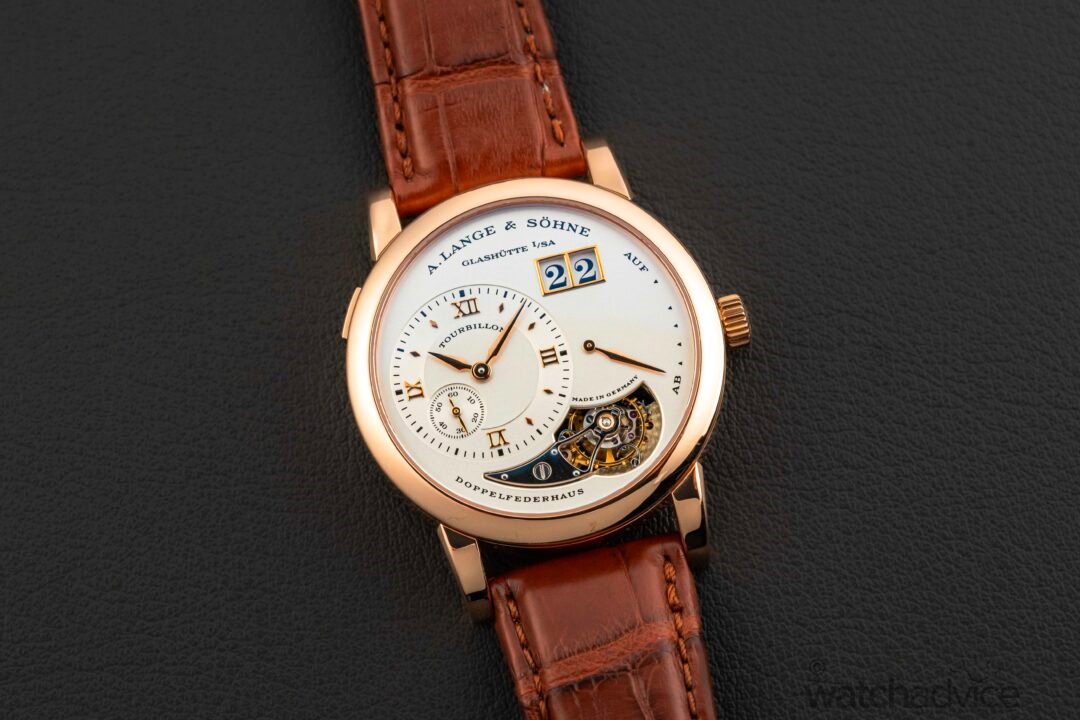
To celebrate the last year of the century, A. Lange & Söhne created a very special piece featuring a complication for the first time in the Lange 1 range. The Saxon manufacturer released the Lange 1 Tourbillon in two references: 704.025, a platinum edition limited to 150 pieces, and 704.032, a rose gold model limited to 250 pieces.
A. Lange & Söhne states, “For the Lange 1 Tourbillon, the calibre L901.0 went through one more step of evolution with the re-positioning of the sub-seconds indication and with the added tourbillon carriage. The balance is also moved from across the crown to 6 o’clock position as it is now directly connected to the running train without the cut-out with three gold chatons”.
2002 – Lange 1 Moon Phase
Reference: 109.021, 109.025 & 109.032
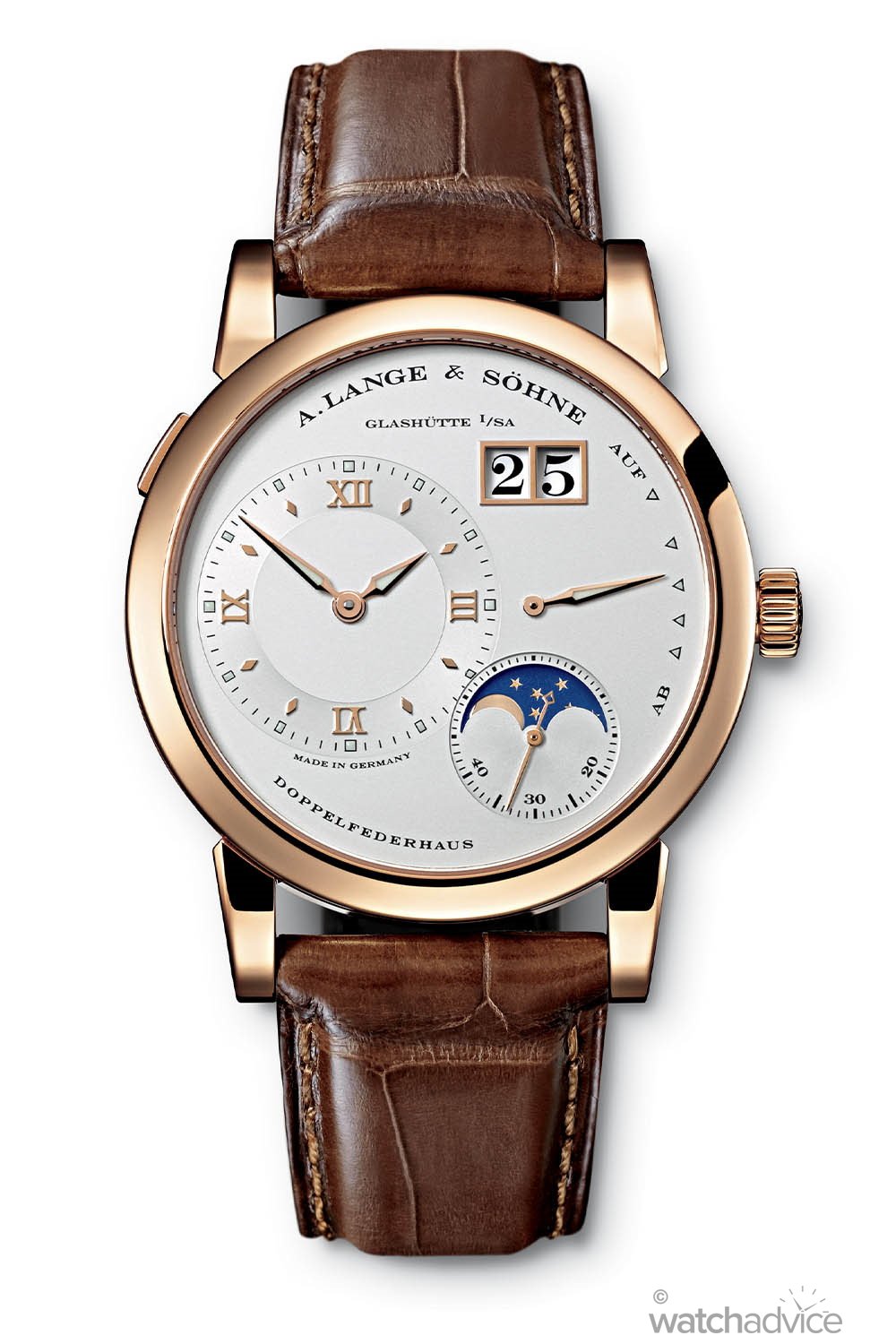
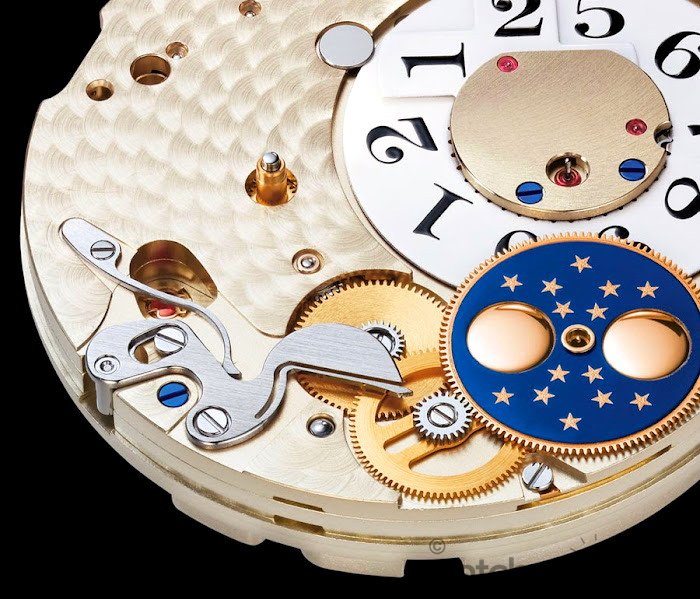
With A. Lange & Söhne now starting to introduce complications into the Lange 1 models, the brand actually took a step back from the tourbillon complication to release the more popular, classic and attainable moon phase complication. Unlike the Lange 1 Tourbillon, however, the dial didn’t need to be re-arranged to make way for the complication. Instead, A. Lange & Söhne integrated the moon-phase disc into the constant seconds sub-counter.
A. Lange & Söhne presented the Lange 1 Moon Phase in three variations. Reference 109.021 featured a yellow gold case with a champagne dial. Reference 109.025 in a platinum case with rhodium dial and reference 109.032 in a pink gold case with silvered dial.
2003 – Grand Lange 1
Reference: 115.021, 115.025 & 115.031
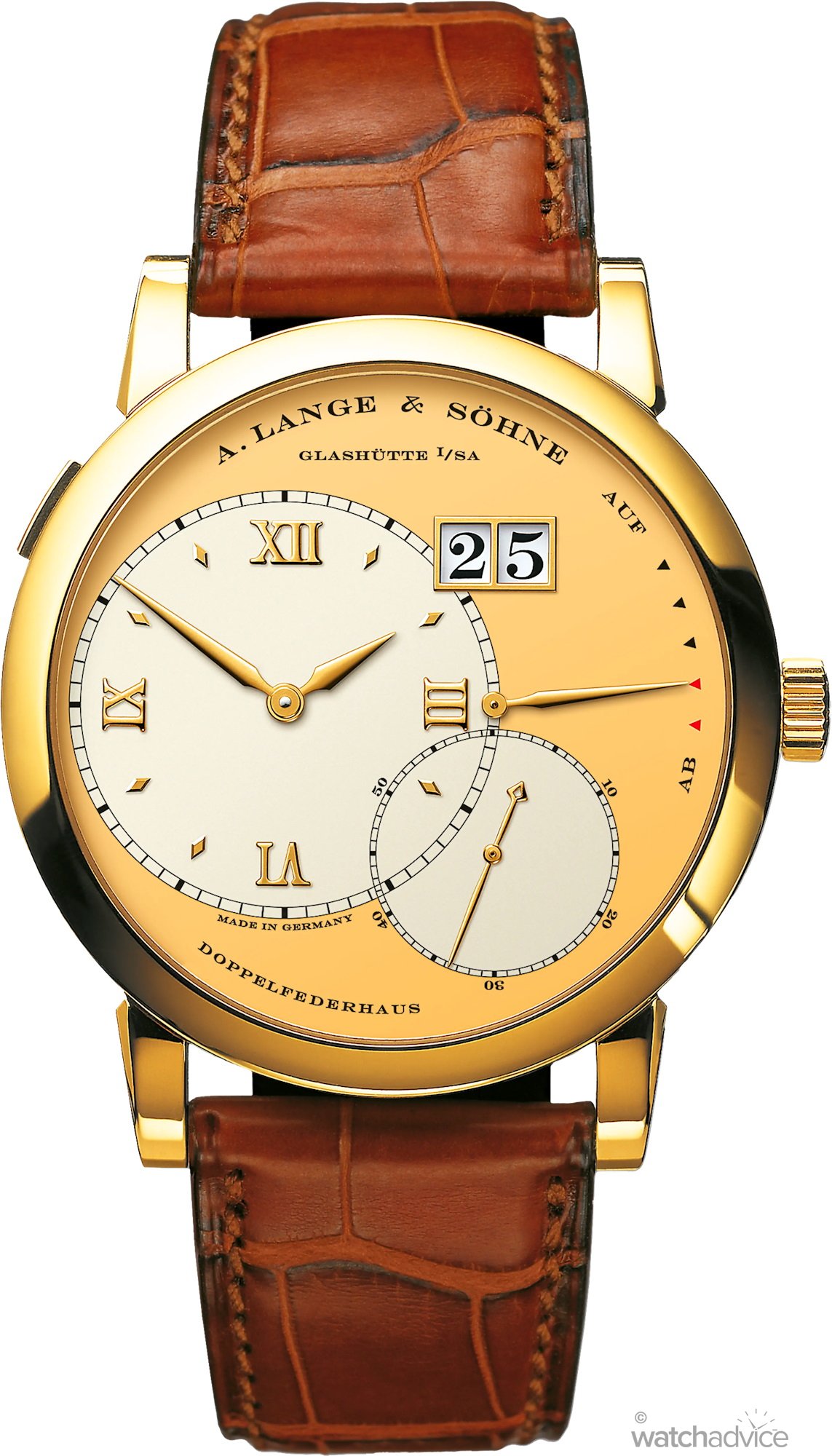
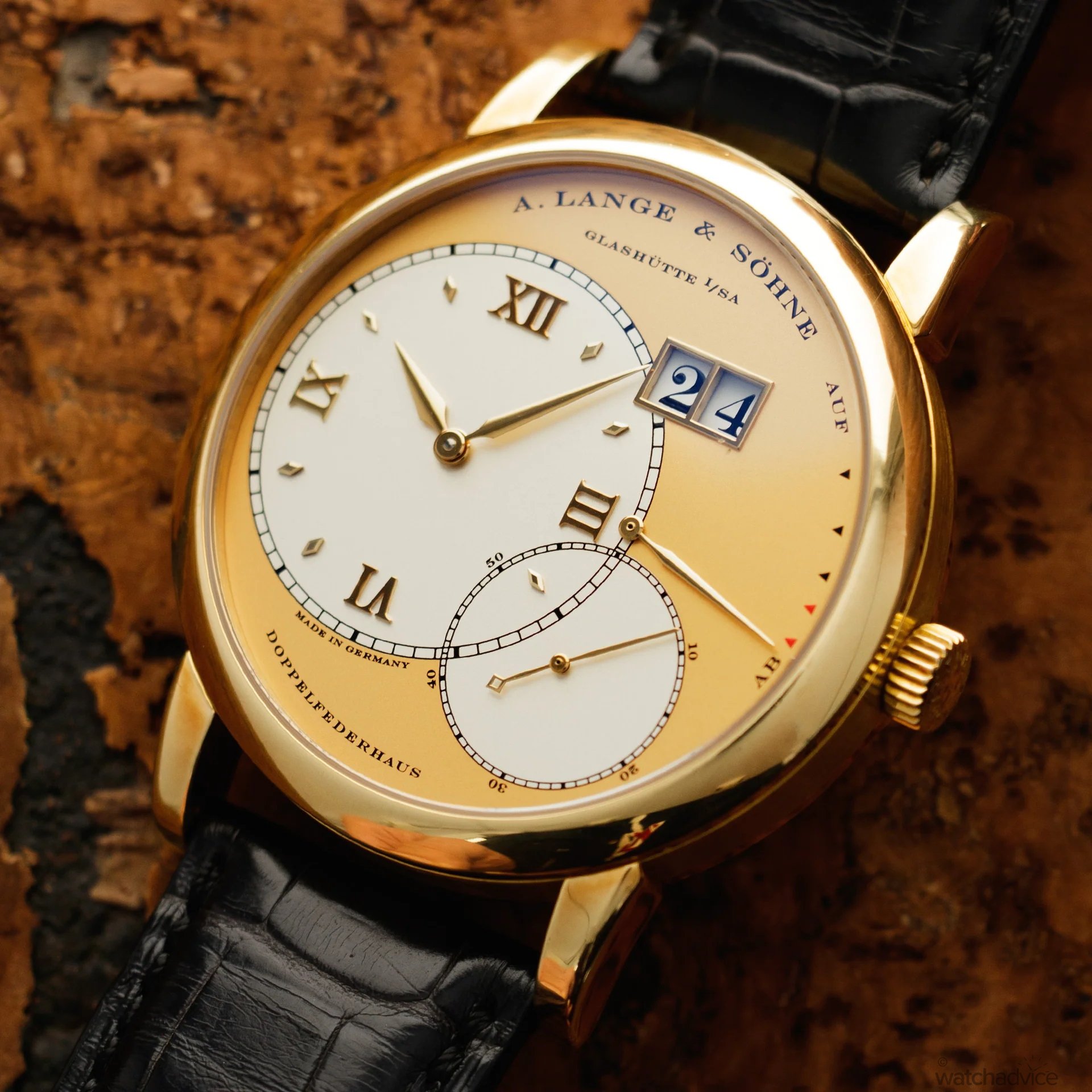
With the growing market trend of consumers wanting larger watches, A. Lange & Söhne created the Grand Lange 1 to cater for this demand. The Grand Lange 1 was presented in 2003, and it featured a larger case size of 41.9mm. The watch, however, retained the same L.901.0 movement as per the original Lange 1.
With the increase in size, the Grand Lange 1’s dial was out of proportion, too. The date window, which is now larger in size, crosses into the “minute track” of the time sub-dial. The time sub-dial and the constant seconds sub-dial greatly overlap as well, taking the essence out of the precisely designed Lange 1 model. The Grand Lange 1 was introduced in three references: 115.021 – yellow gold with two-tone silver and champagne dial (as seen in the above image), 115.025 – platinum case with two-tone silver and rhodium dial, and lastly 115.031 – pink gold case with two-tone silver and black dial.
2003 – Grand Lange 1 Luna Mundi
Reference: 119.026 & 119.032
The A. Lange & Söhne Grand Lange 1 Luna Mundi was released alongside the Grand Lange 1. It is the brand’s first-ever two-watch set. A. Lange & Söhne released these models with a larger case size, so what you’ll find is that the dial design is very much similar to the Grand Lange 1. We see the date window overlapping the time dial and the two sub-dials overlapping each other.
The difference with these models, however, is that there is a moon phase within the constant seconds sub-dial, and also, the main time sub-dial comes with a visual representation of a celestial object: the Southern Cross for the pink gold (reference 119.032) and the Ursa Major for the white gold models (reference 119.026).
2005 – Lange 1 Time Zone
Reference: 116.021, 116.025 & 116.032
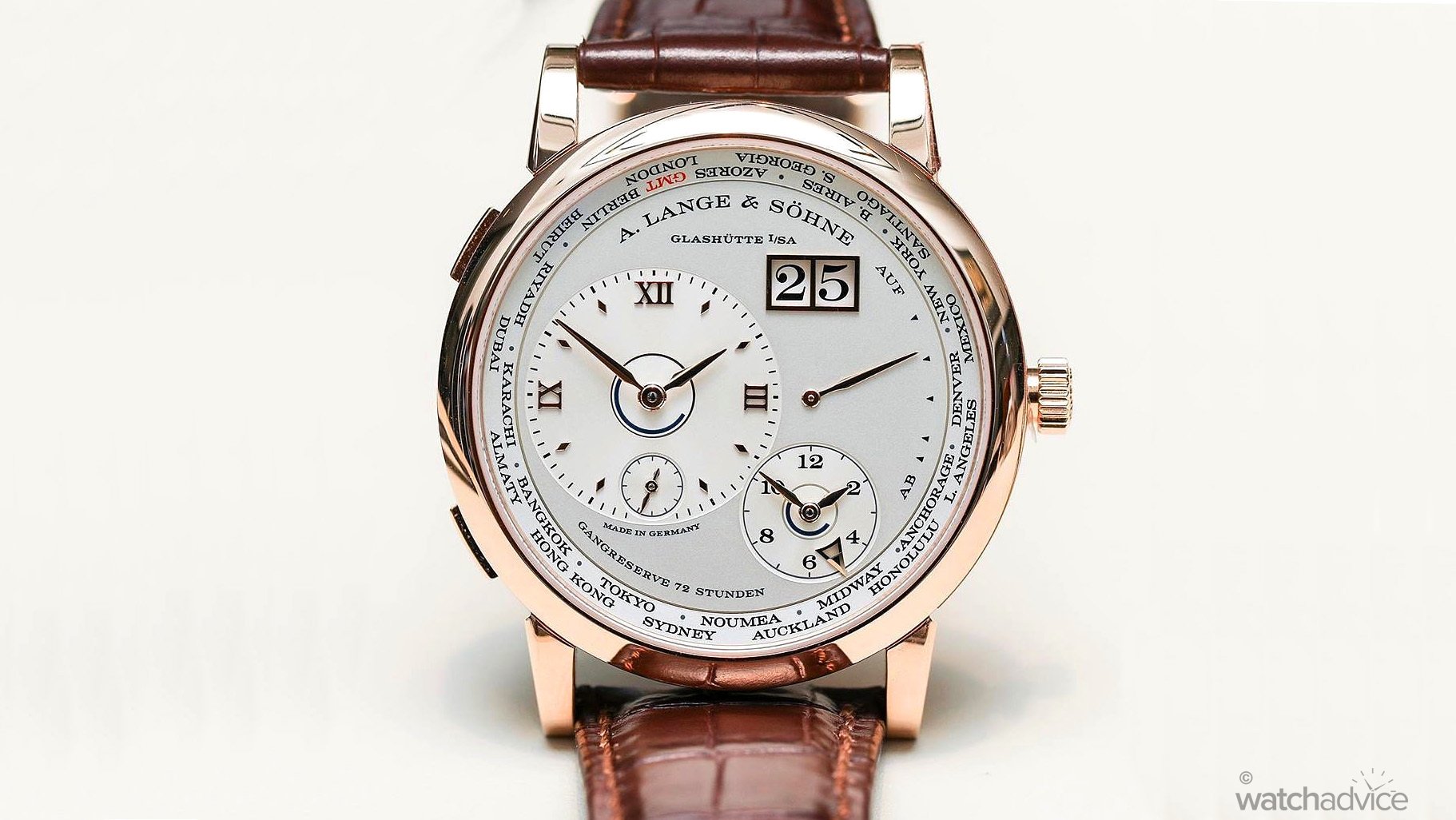
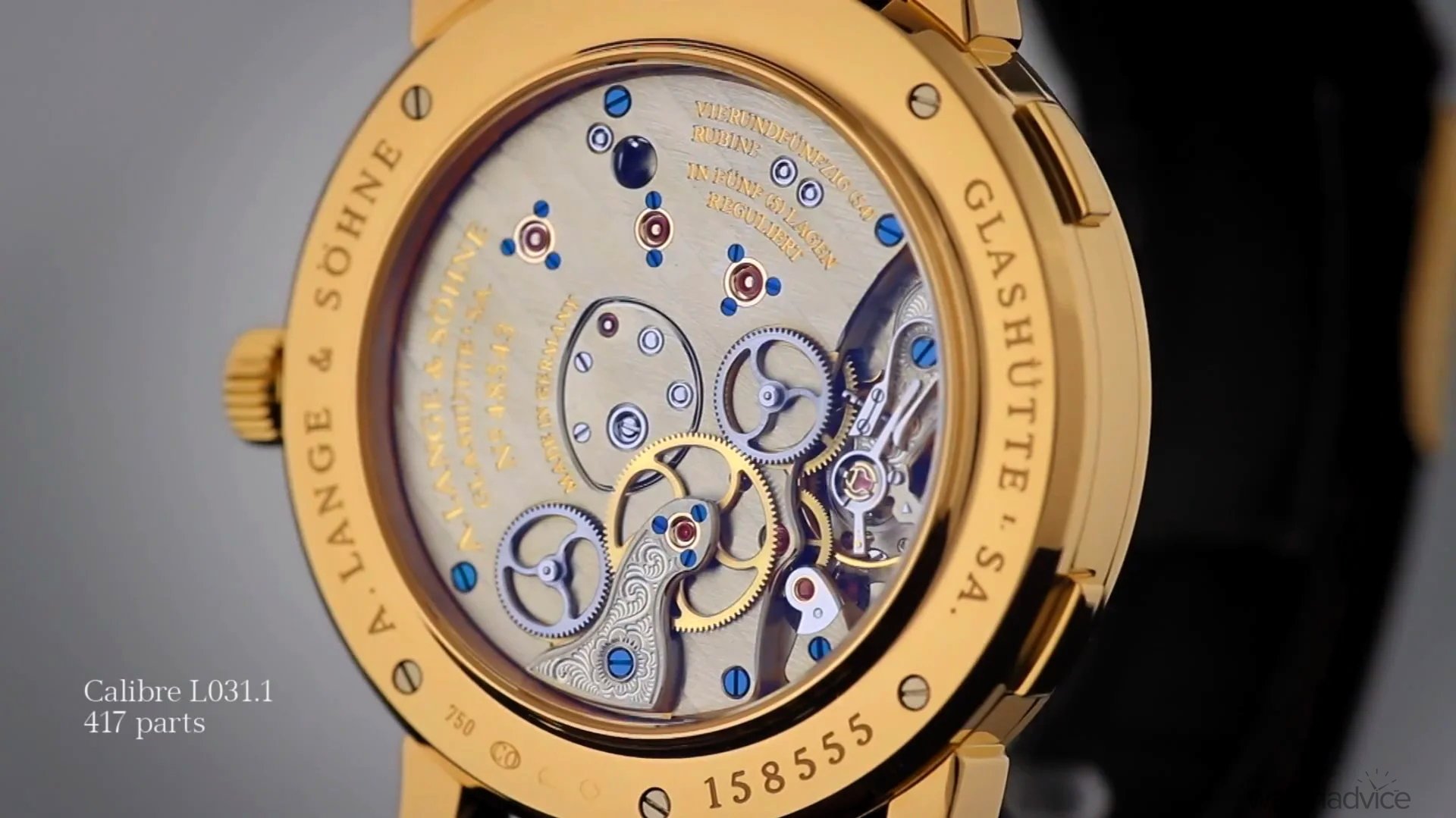
With complications becoming more common now in the Lange 1 models, in 2005, A. Lange & Söhne introduced a model that would cater to world travellers: The Lange 1 Time Zone. This wasn’t just a simple GMT or dual timezone watch either. A. Lange & Söhne went the extra distance and created the world timer for the Lange 1. This ingenious solution keeps the core design layout of the Lange 1 the same while adding the city ring on the outer part of the dial.
The main change on the dial was that the constant seconds subdial was moved into within the time dial itself so that the seconds subdial can now make way for the 12-hour second timezone hours and minutes subdial with its own day/night indicator. The Lange 1 Time Zone’s case size also had to be increased to 41.9mm for the city ring.
2009 – Little Lange 1 Moon Phase
Reference: 819.048 & 819.049
More than ten years after the launch of the Little Lange 1 by A. Lange & Söhne, the brand releases another version, this time with a moon phase complication. The Little Lange 1 was created to cater for those who prefer a smaller version of the Lange 1 without compromising what made the Lange 1 iconic.
While the first Little Lange 1 models were designed for both men and women, this 2009 release catered to the female clientele. The models came with white gold diamonds on the bezel, and the dial was either a white (reference 819.048) or black (819.049) mother-of-pearl. The timepieces also showed the moon phase complication within the seconds sub-dial.
2010 – Lange 1 Daymatic
Reference: 320.021, 320.025 & 320.032
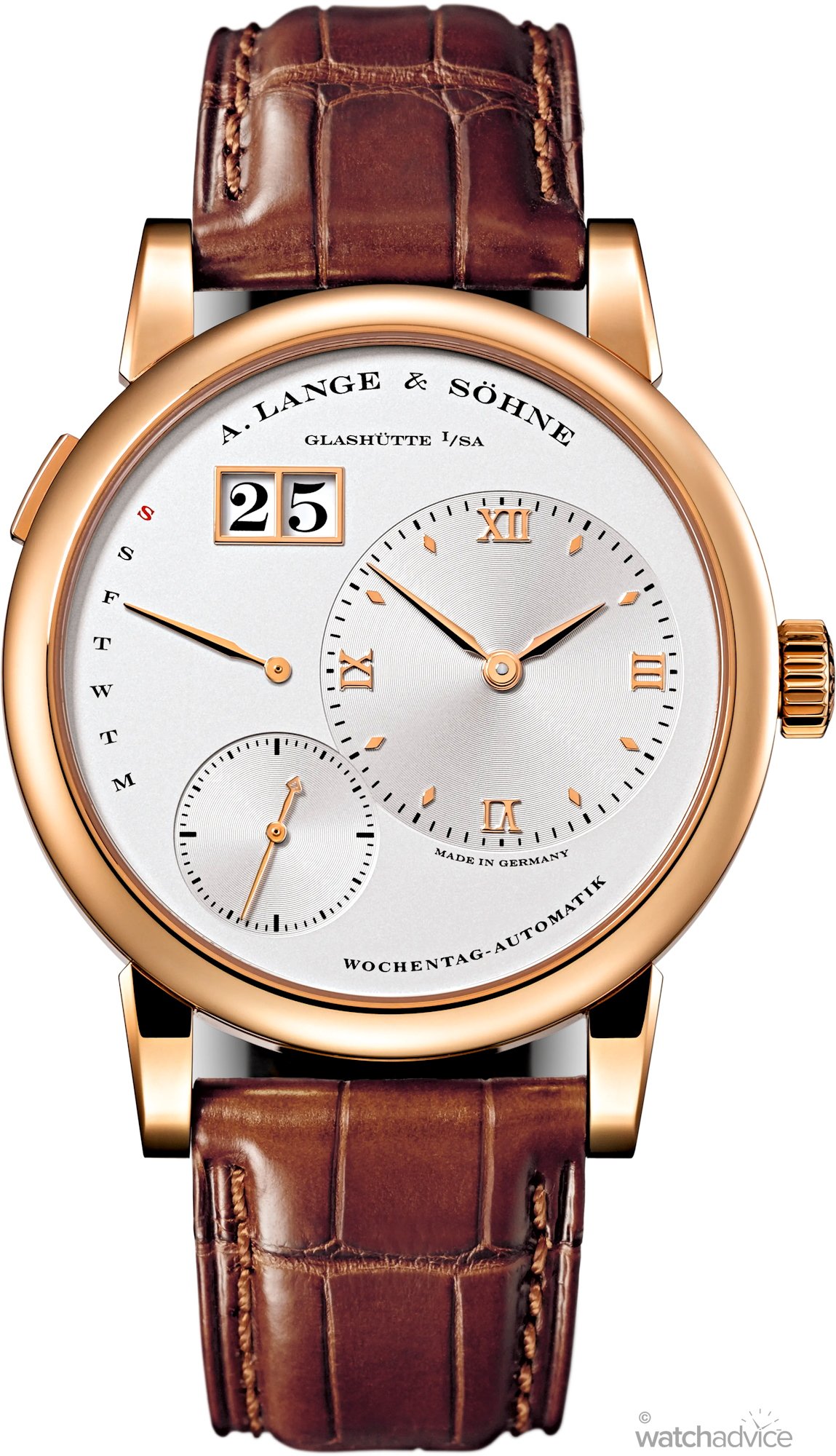
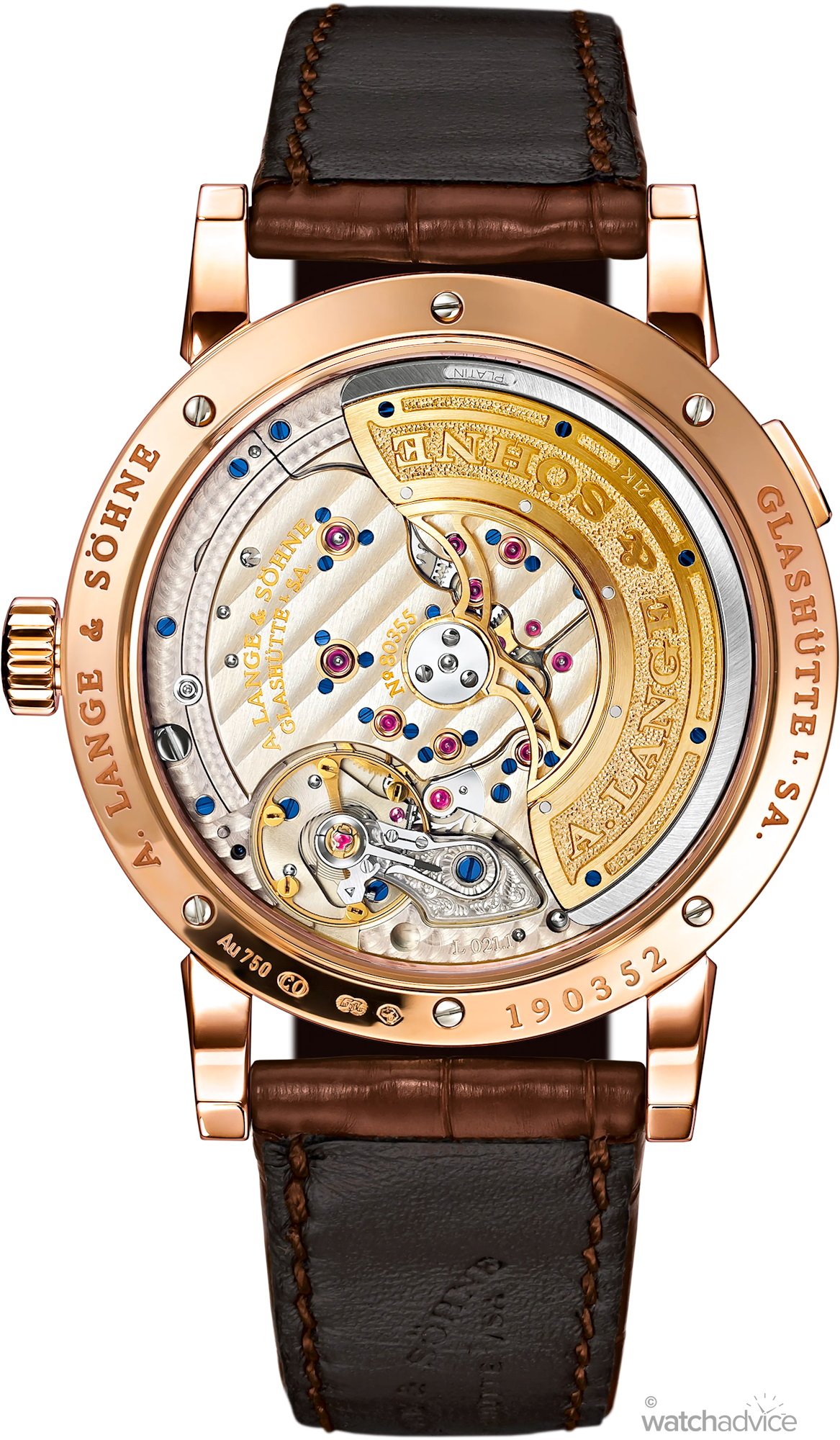
The first major update to the Lange 1 came in 2010. This was the first time the brand wanted to integrate an automatic movement into the Lange 1. A new calibre movement was developed, L201.1 which featured a central rotor and 50 hours of power reserve. However, with this new movement came design changes on the dial.
While visually, the elements of the dial are kept intact, the layout has been flipped. The time sub-dial is now shown on the right as a way for the wearer to easily view the time, especially if wearing a suit and the watch sits out from the cuff. The constant seconds and large date window is kept; however, it is now on the left side. The main design change comes with the change to the power reserve indicator. As this is an automatic model, A. Lange & Söhne have used a retrograde day-of-the-week indicator instead.
2012 – Lange 1 Tourbillon Perpetual Calendar
Reference: 720.025
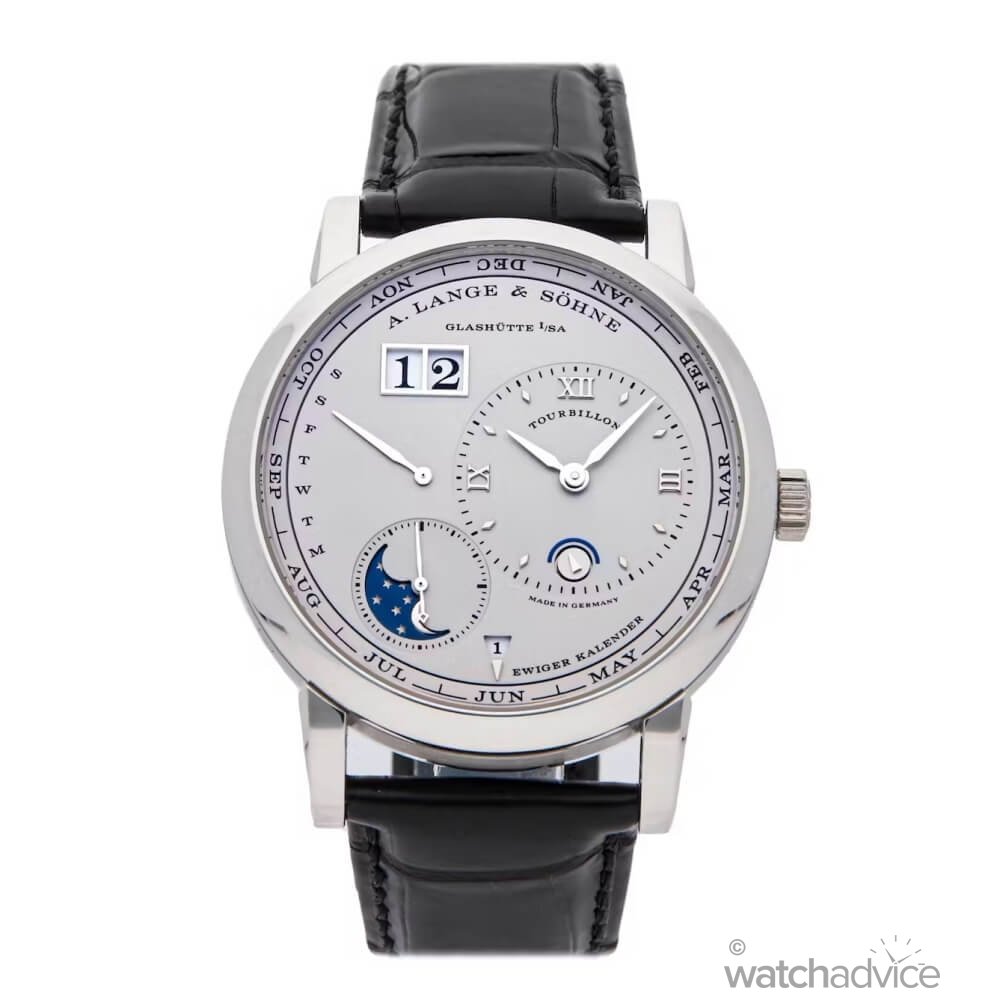
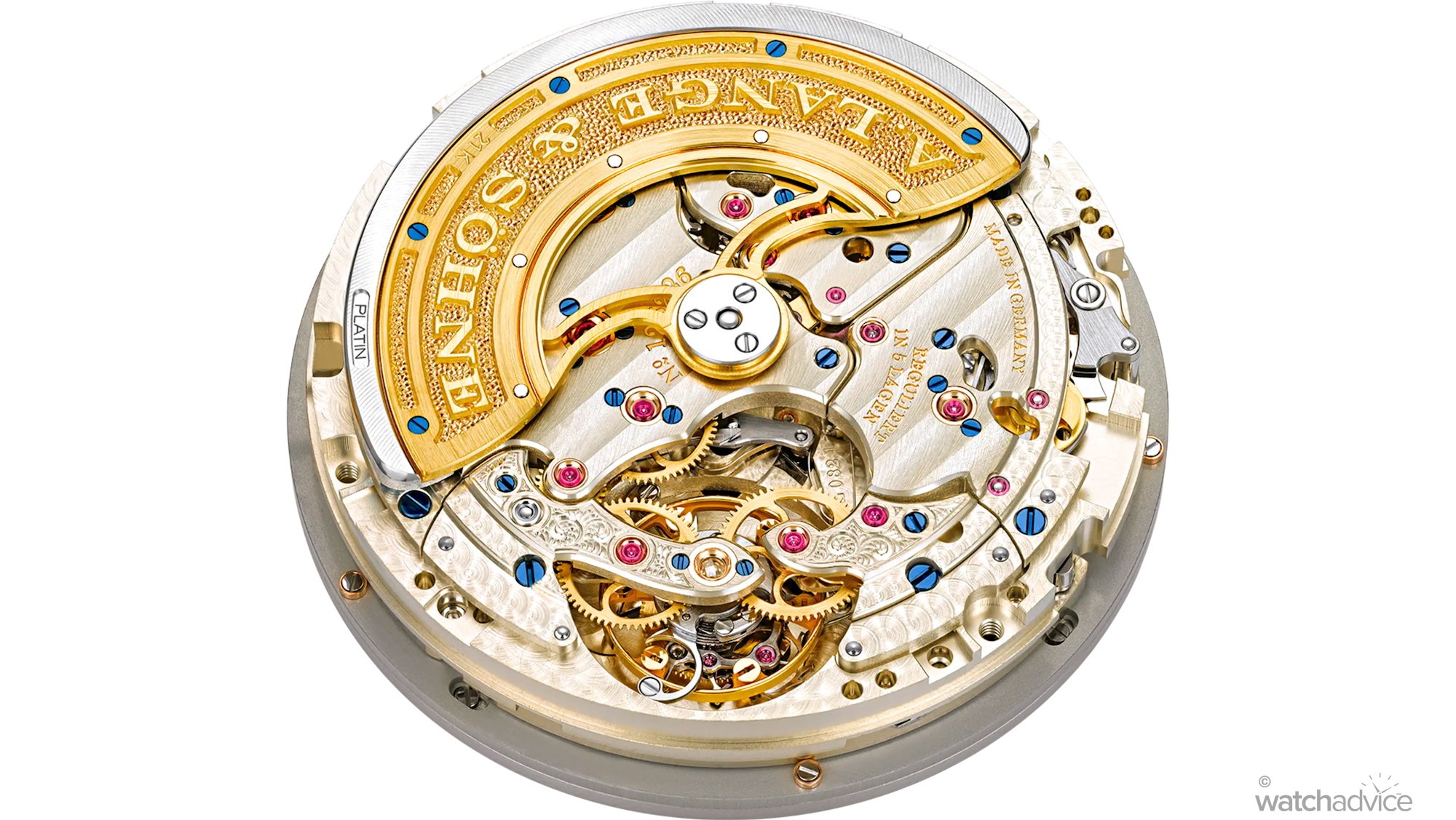
In 2012, A. Lange & Söhne created the most complex movement for the Lange 1 to date. Using the design of the Lange 1 Time Zone from 2005 as a reference, the Lange 1 Tourbillon Perpetual Calendar was created. The watch features an automatic movement, which means the dial layout is the same as the 2010 Daymatic model. This self-winding L.082.1 movement features a tourbillon regulator with a patented stop-seconds mechanism, which can only be seen through the case back.
The perpetual calendar functions can be seen through Lange 1’s standard date feature at 11 o’clock, the retrograde day of the week indicator at 9 o’clock, and the month shown on the outer ring of the dial. The month inductor is shown through a triangular pointer at 6 o’clock. Sitting above this month indicator is a window, which shows the current leap year (the number 4 being the leap year etc). A day and night indicator is also included within the time sub-dial itself.
2013 – Grand Lange 1 “Lumen”
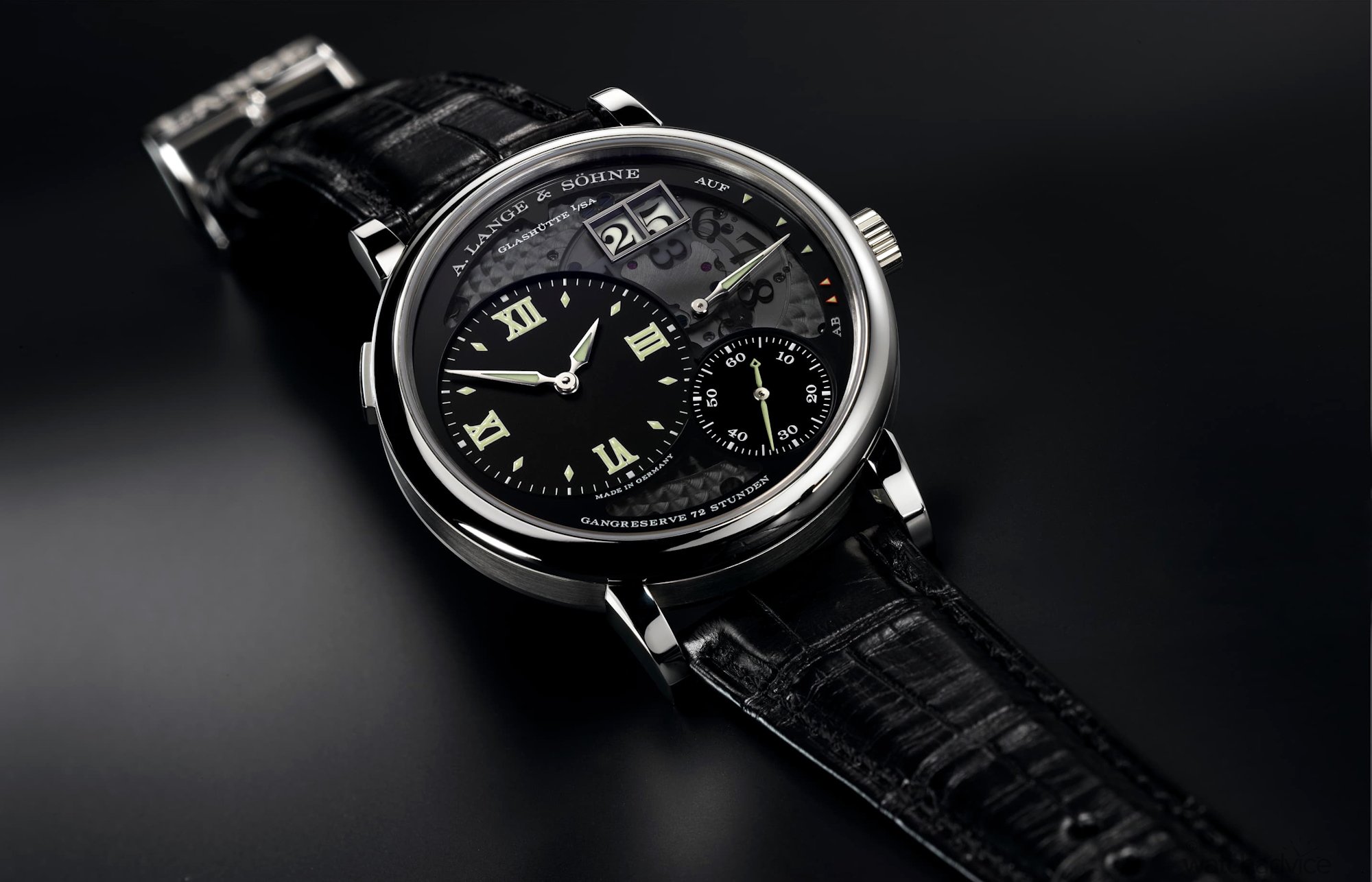
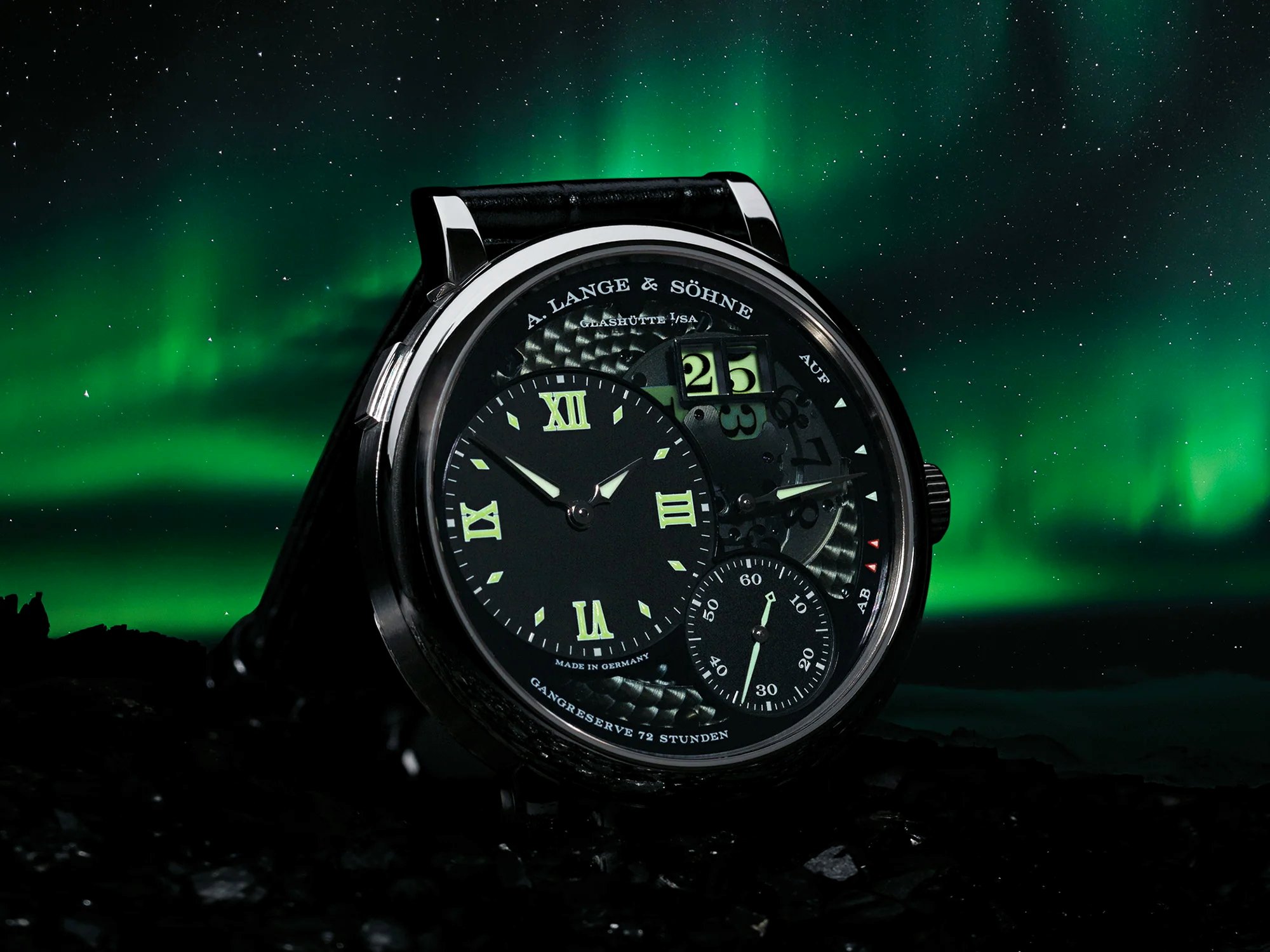
A. Lange & Söhne in 2013 created the Grand Lange 1 “Lumen”. This model featured a partially semi-transparent sapphire crystal dial which had a blacked out “smoked” look to it so that the sub-dials and power reserve indicator can still be clearly visible. While the transparent dial was an appealing characteristic of this timepiece, the main appeal was luminosity of the watch.
A. Lange & Söhne states that “The challenge the engineers were presented with when they developed the GRAND LANGE 1 “Lumen” was to assure maximum luminosity even just after the daily switching cycle. An exceptional solution was found: whereas the tens cross is coated with a white luminous compound and then printed with black numerals, the transparent glass units disc with black printed numerals rotates in front of a luminous background”.
2013 – Lange 1 Tourbillon Perpetual Calendar Handwerkskunst
Reference: 720.048FE
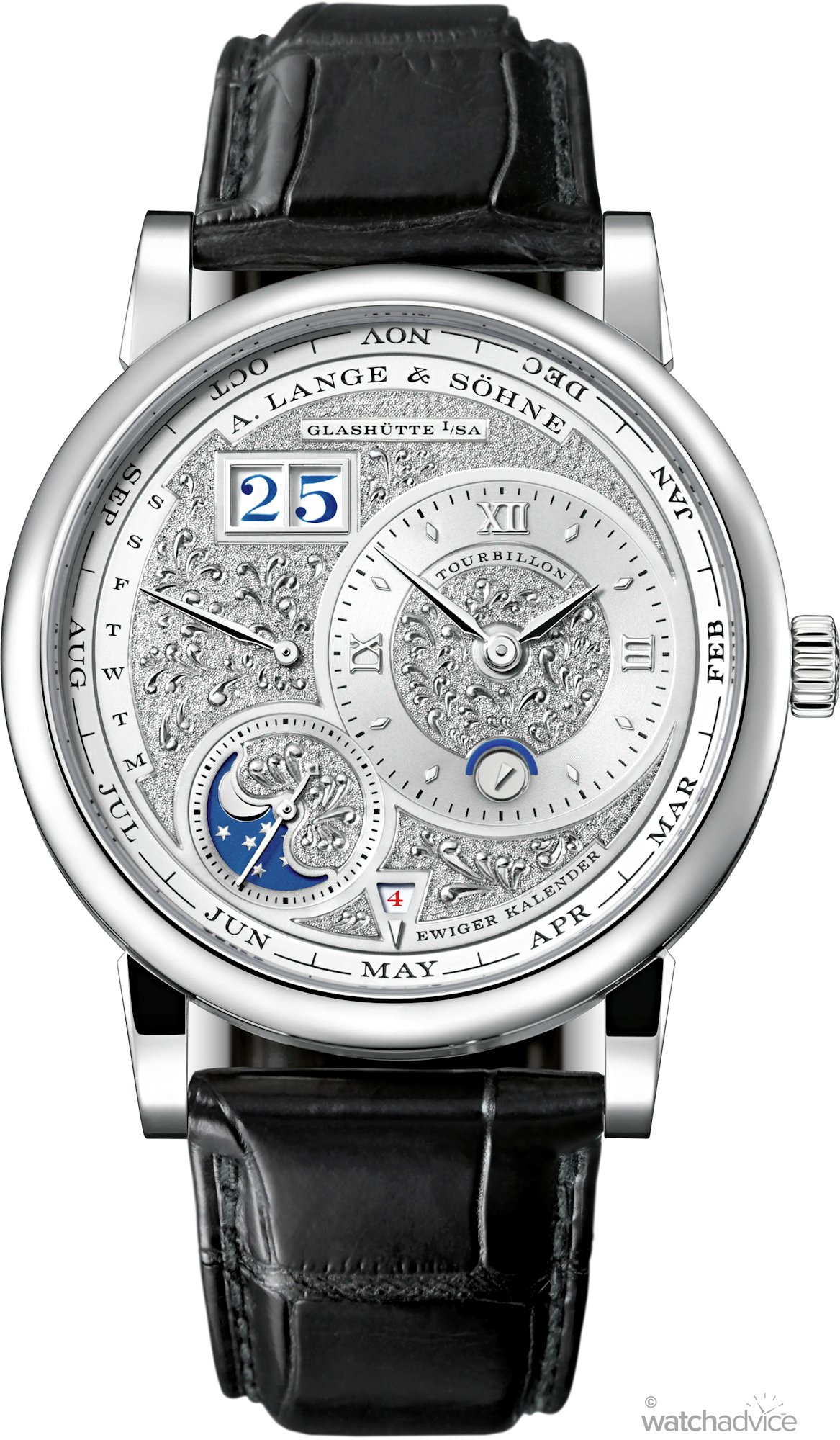
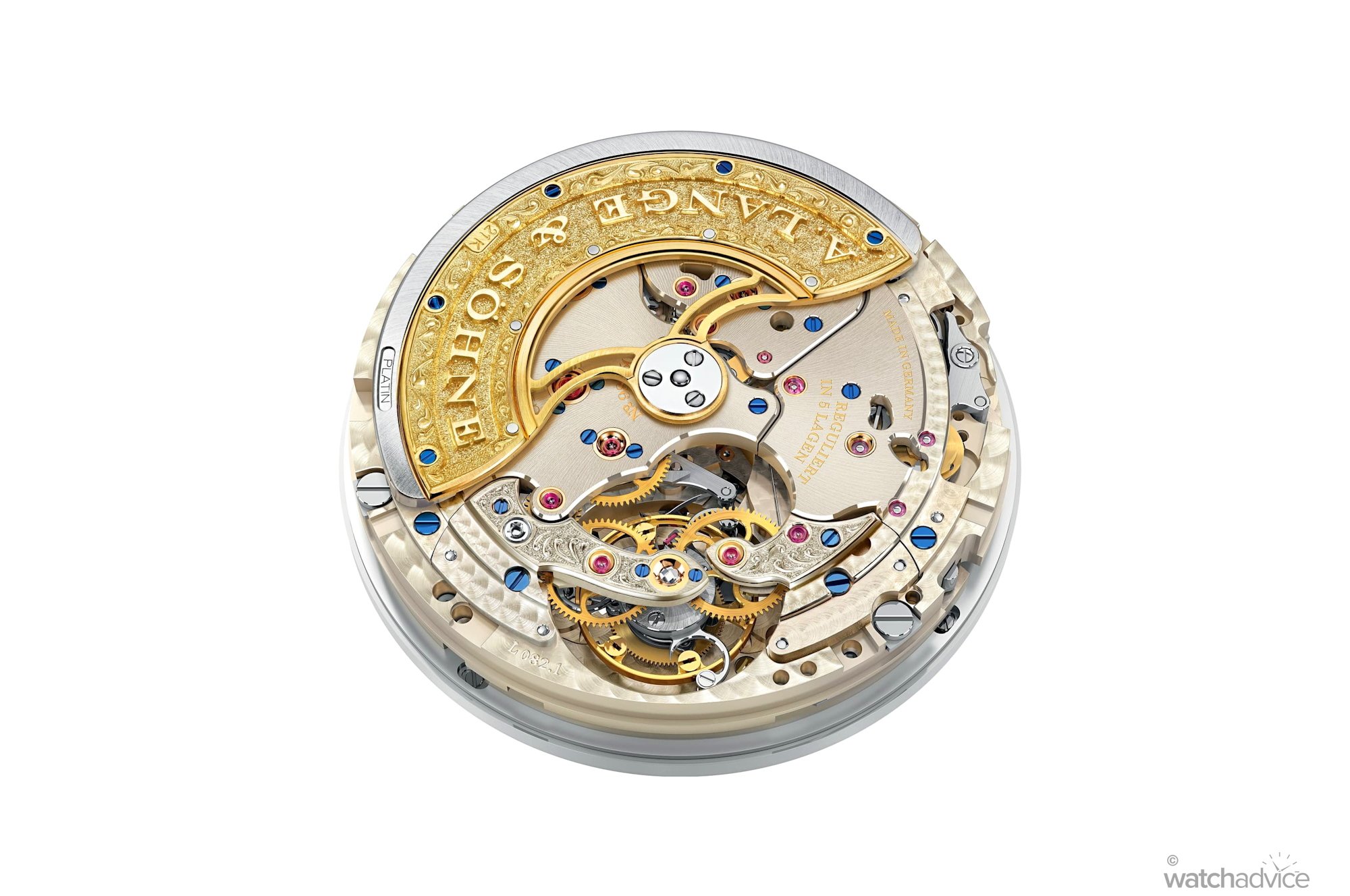
This special limited edition Lange 1 Tourbillon Perpetual Calendar model was introduced in 2013. The timepiece features the same perpetual calendar dial layout and design as the Lange 1 Tourbillon Perpetual Calendar Reference 720.025, released a year prior.
The point of difference with this model is the incredible hand-engraving on the dial. The solid white-gold dial is hand-engraved with relief and tremblage techniques. The blue numerals of the outsize date are painted by hand. The hands are made of rhodiumed gold.
2014 – 20th Anniversary of Lange 1
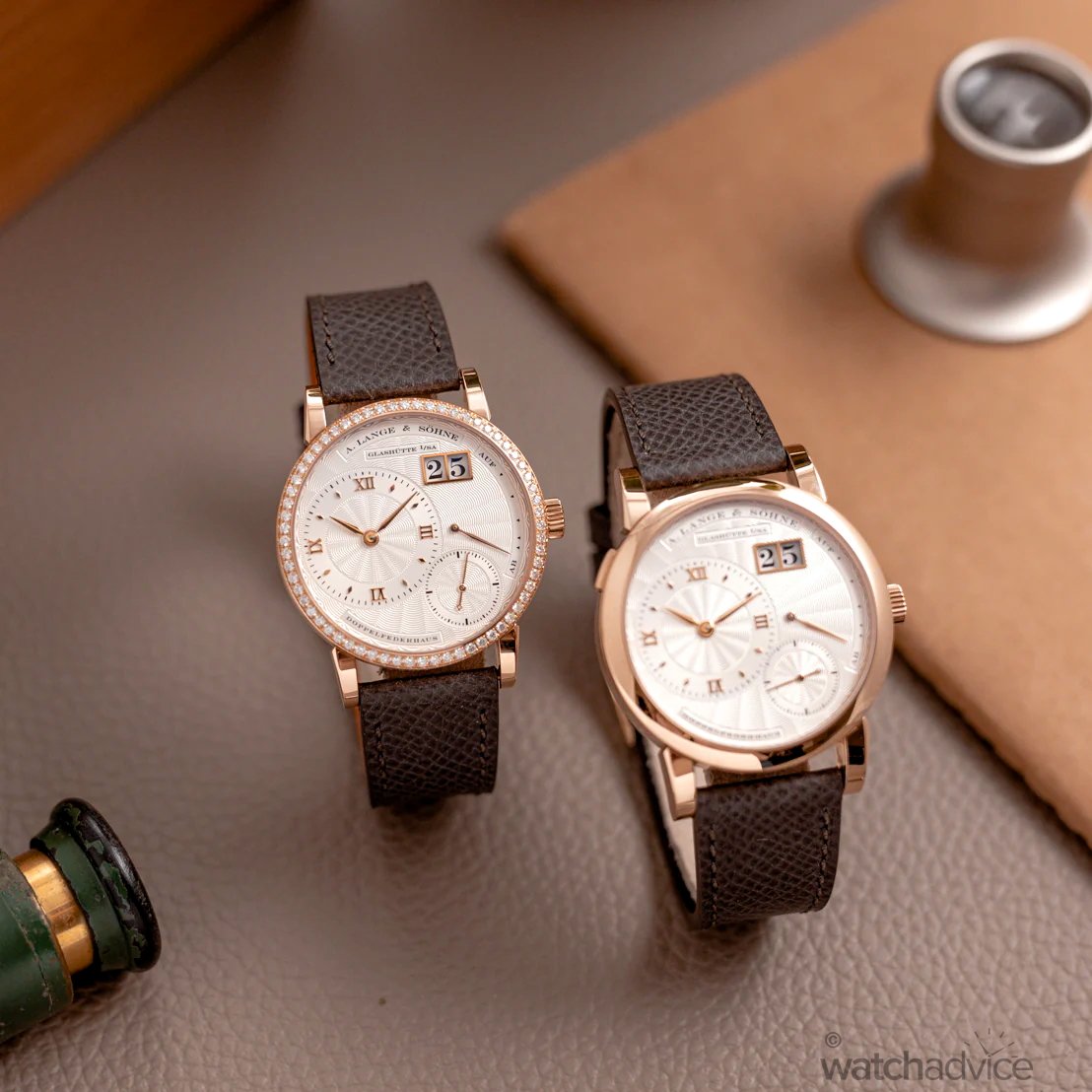
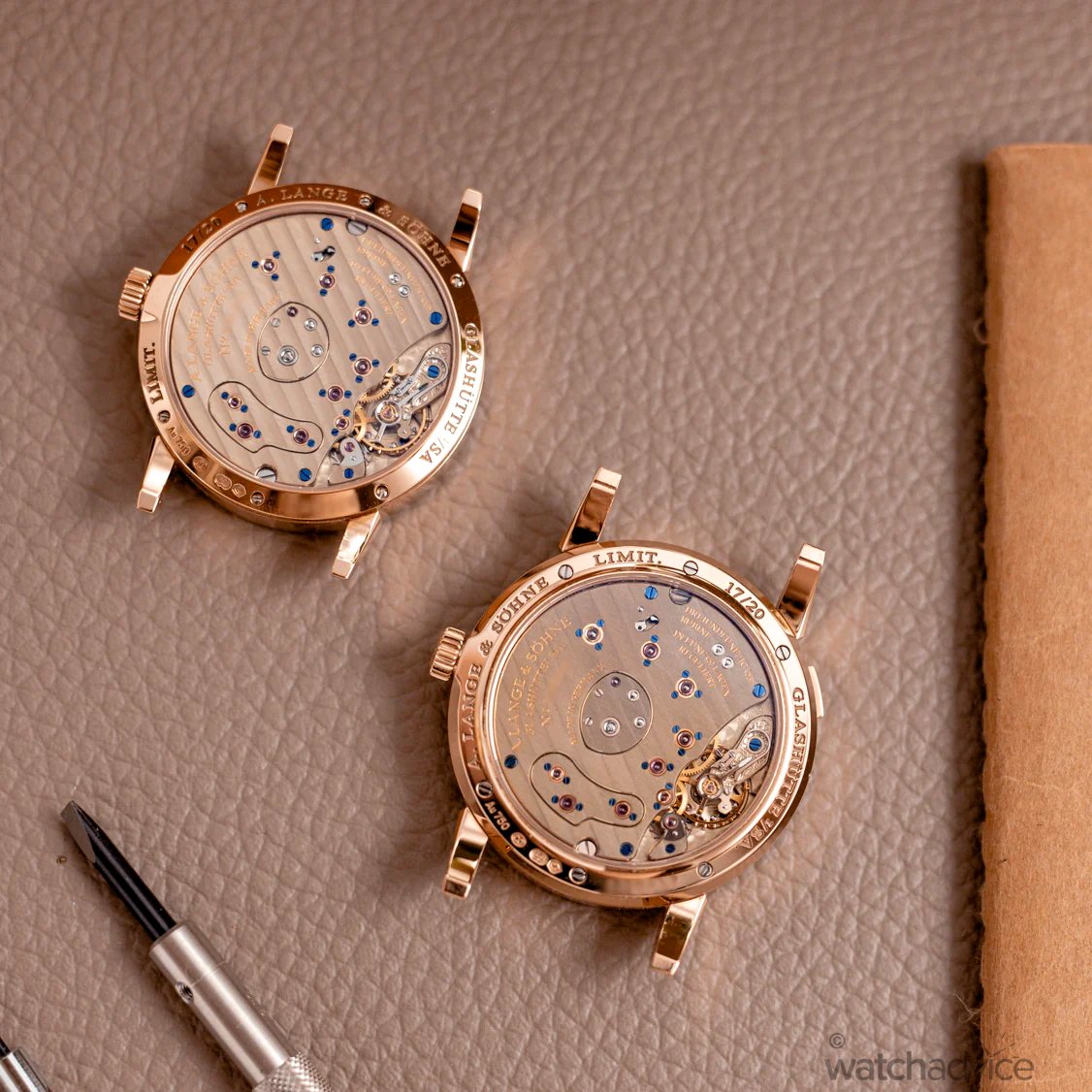
To celebrate the 20th Anniversary of the Lange 1, A. Lange & Söhne released five pairs of special edition models. The pair included a Lange 1 and a Little Lange 1. Each of the models were beautifully decorated with guilloche patterned dials and sub-dials.
This was like a “His and Her’s” collection. Each of the Little Lange 1 models came fitted with bezel that had 64-brilliant cut diamonds. The pairs were offered in various precious metal casing as well, which are platinum, white gold and pink gold. The stand out models in the collection were the pink gold versions (reference 101.064 Lange 1 and 811.064 Little Lange 1).
2014 – Grand Lange 1 Moon Phase
Reference: 139.021, 139.025 & 139.032
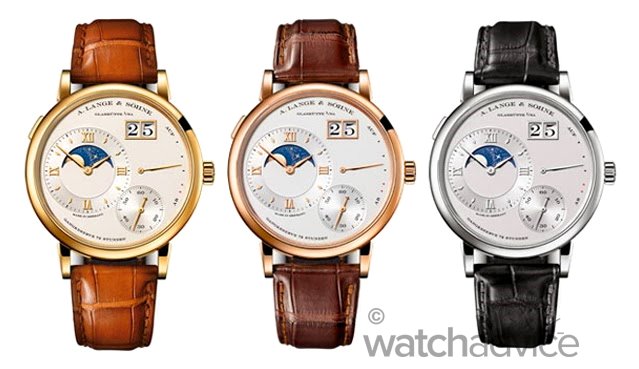
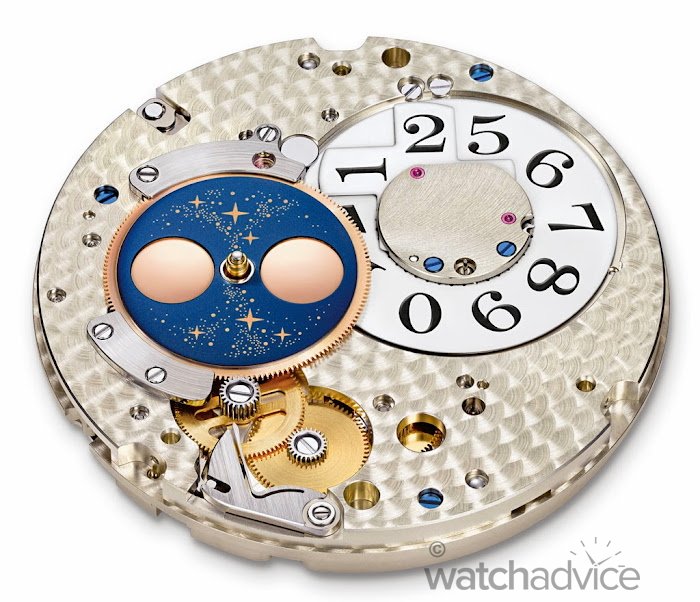
In 2003, A. Lange & Söhne released the Grande Lange 1 Luna Mundi, which featured a moon phase on the constant seconds sub-dial. For the 2014 Grande Lange 1 edition, the brand decided to implement the moon phase on the main time dial, which would give a bigger view on the moon phase disc. One of the noticeable differences between these Grande Lange 1 creations and those of the past is that the sub-dials and date windows don’t overlap, retaining the classic look of the Lange 1.
This Grand Lange 1 still retains the manual-wound movement, which means it retains the classic Lange 1 dial design. Three versions of the Grand Lange 1 Moon Phase were presented in 2014: reference 139.021, which had a yellow gold case with a champagne dial; reference 139.025, which had a platinum case with a rhodium dial; and reference 139.032, which had a pink gold case and silvered dial.
2016 – Grand Lange 1 Moonphase “Lumen”
Reference: 139.035F
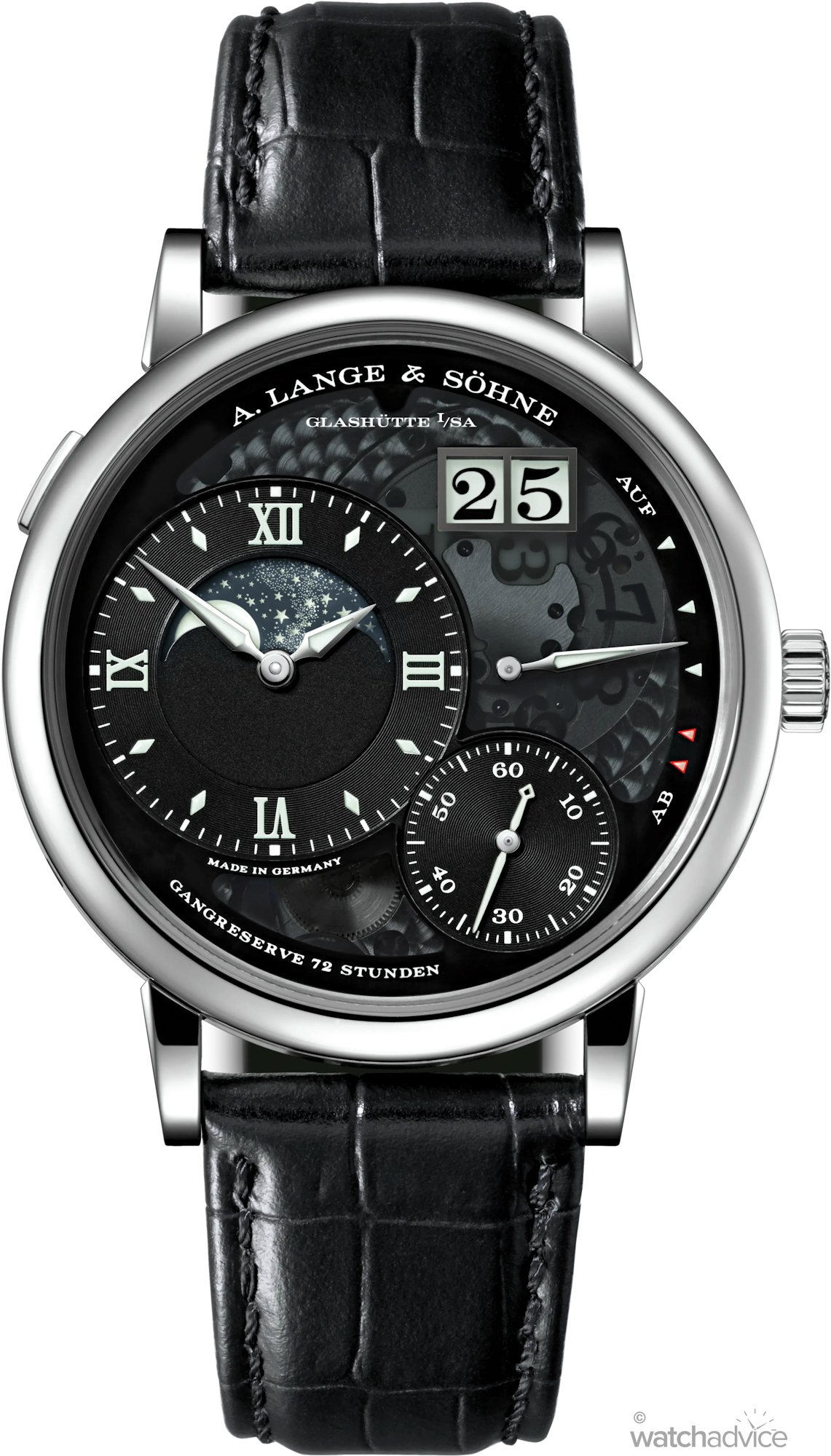
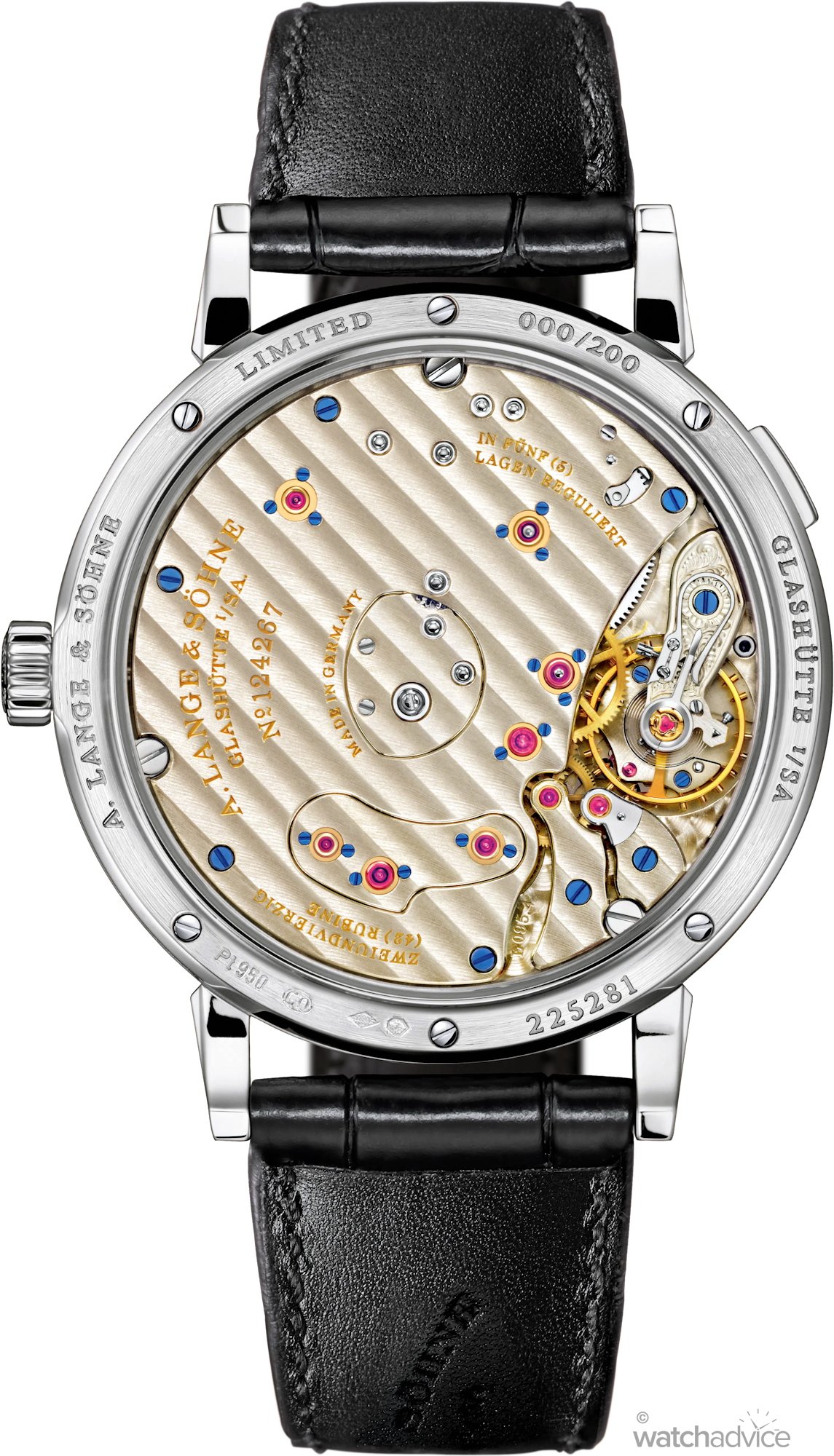
On the back of the Grand Lange 1 “Lumen” released in 2013, three years later A. Lange & Söhne releases the model now with a luminous moon phase complication. The design layout is the same as the 2013 model, with the transparent “smoked” sapphire crystal dial giving a view of the movement underneath.
The Grand Lange 1 Moonphase “Lumen” is made of solid silver, while the hands are made of rhodiumed gold. The hands, hour indices on the time subdial, the date wheels and now the moon phase have a beautiful luminous glow. This is also the first time that A. Lange & Söhne have created a luminous moon phase disc for any of the Lange 1 models!
2019 – 25th Anniversary Lange 1
Reference: 191.066, 139.066, 181.066, 720.066FE, 116.066, 192.066, 117.066, 320.066, 182.066, 722.066F
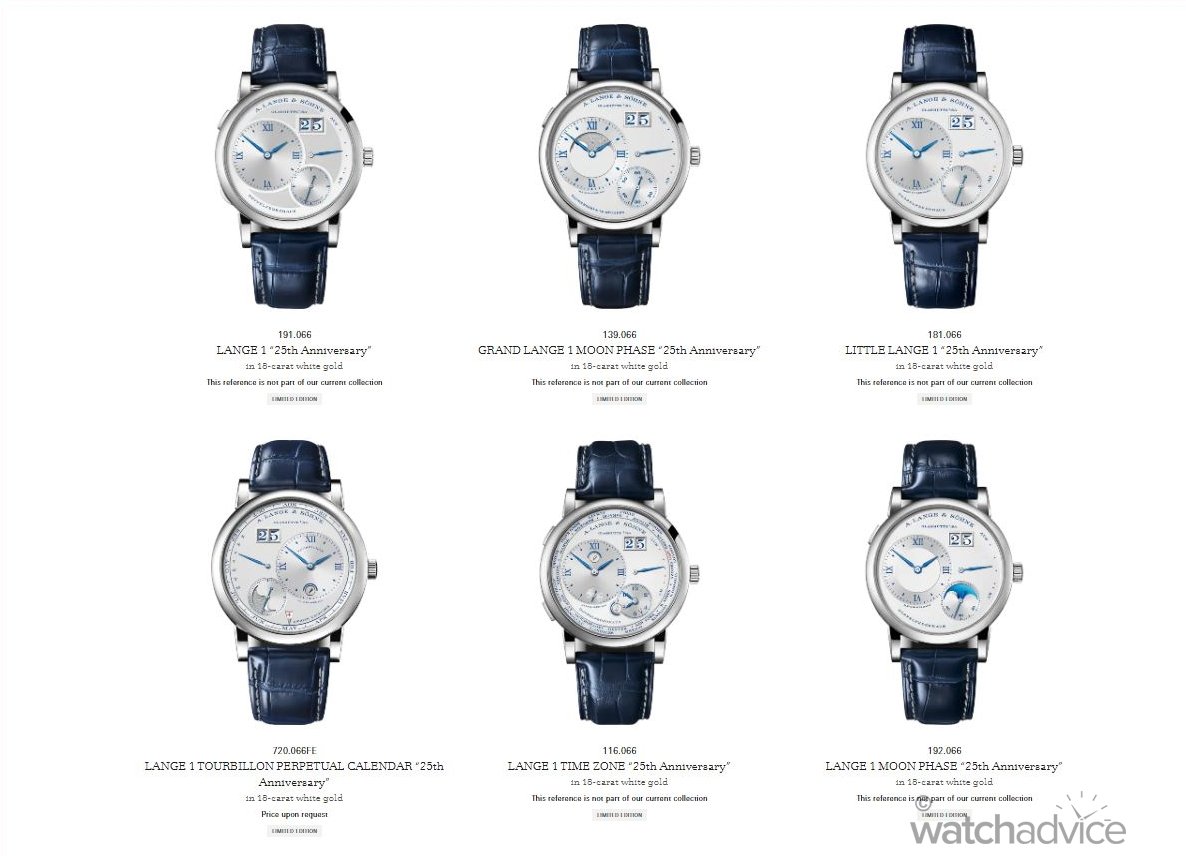
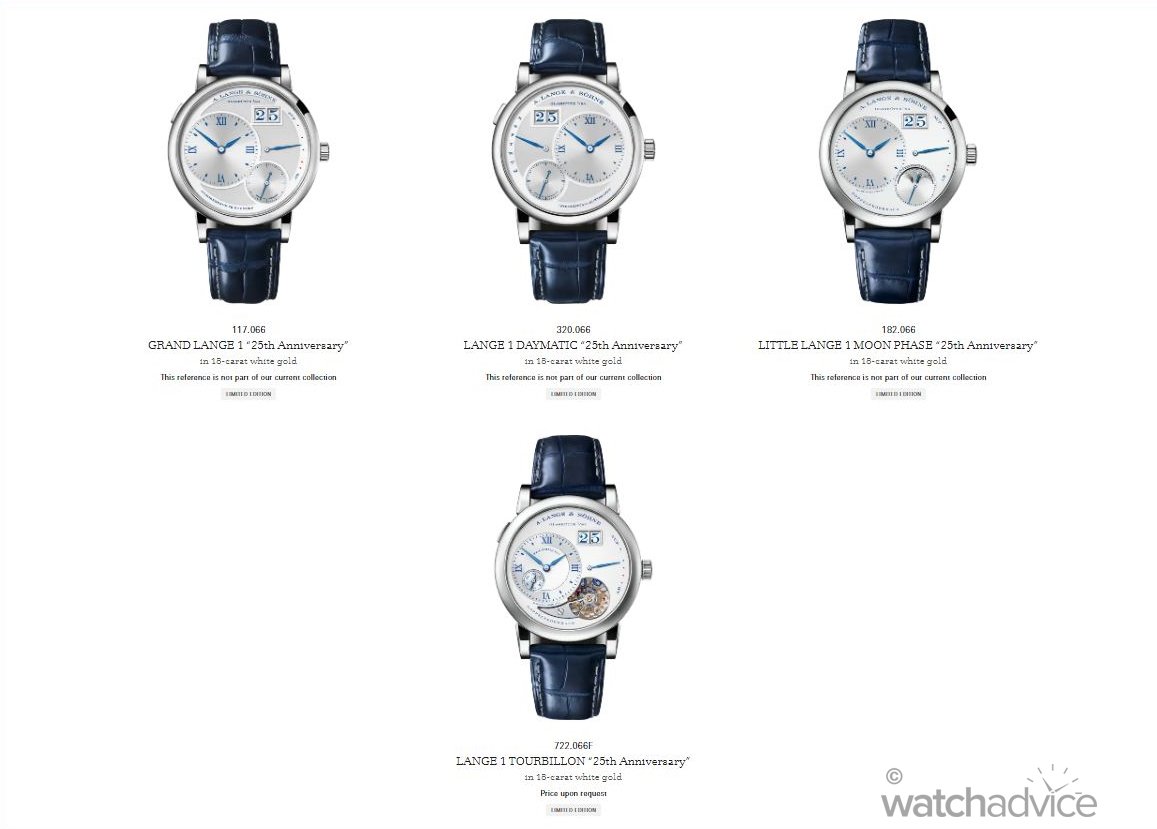
The 25th anniversary of the Lange 1 was celebrated in style by A. Lange & Söhne in 2019. The brand released special limited edition models that have made up the Lange 1 family to date. Altogether, there was a total of 10 watches being presented as part of the 25th-anniversary celebrations. Their common features include a white-gold case, a deep-blue printed argenté-coloured dial, blue date numerals and a hand-stitched blue alligator leather strap with a grey seam.
The models in the 25th-anniversary collection include Lange 1, Grand Lange 1 Moon Phase, Little Lange 1, Lange 1 Tourbillon Perpetual Calendar, Lange 1 Time Zone, Lange 1 Moon Phase, Grande Lange 1, Lange 1 Daymatic, Little Lange 1 Moon Phase and the Lange 1 Tourbillon.
2021 – Little Lange 1 Moon Phase
Reference: 182. 086 & 182.886
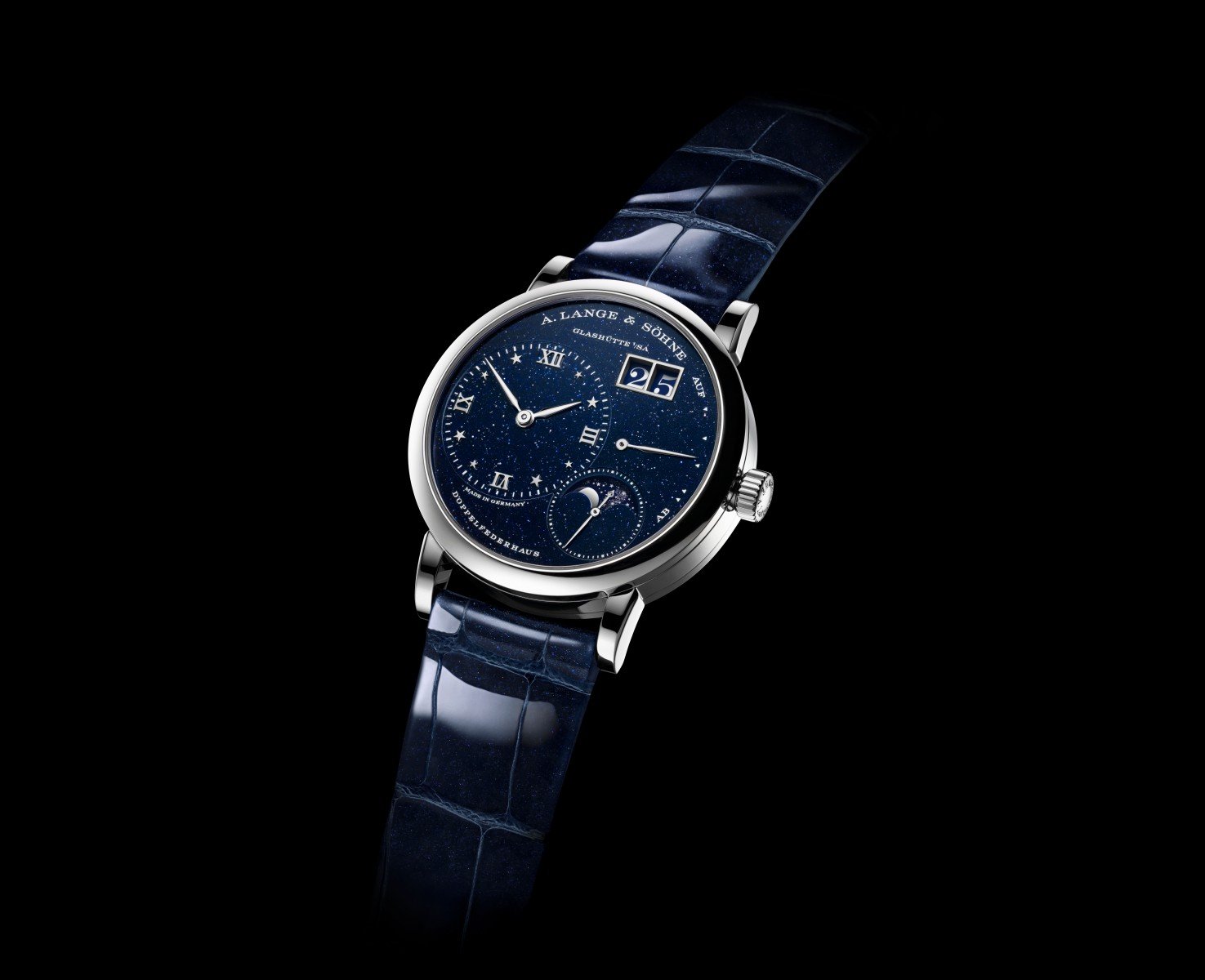
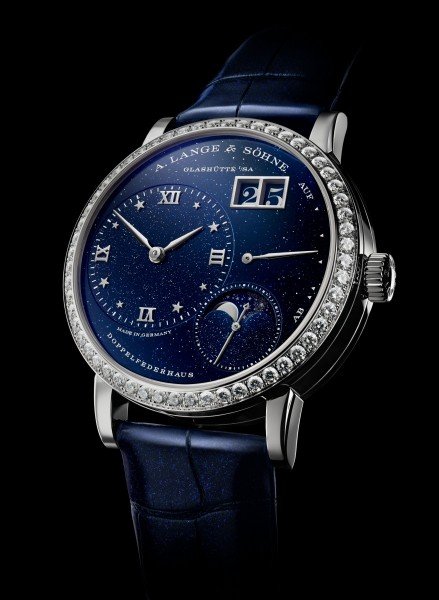
An exceptional moon phase edition of the Little Lange 1 was unveiled in 2021. The beauty of this model lies in the stunning dark-blue dial that glistens like the starry night sky. The dark-blue gold flux dial complements the moon phase disc on the constant seconds sub-dial well, as both the dial and sub-dials have the starry night sky visual effect.
A. Lange & Söhne presented the Little Lange 1 Moon Phase blue dial in two versions. The first is the reference 182.086, which comes with an 18k white gold case, while the second, reference 182.886, comes with a 18k white gold case with a bezel set with approx 1.2cts of brilliant-cut diamonds.
2024 – 30th Anniversary of Lange 1
Reference: Lange 1: 191.062 (Black)/191.063 (Blue), Little Lange 1: 181.062 (Black)/181.063(Blue)
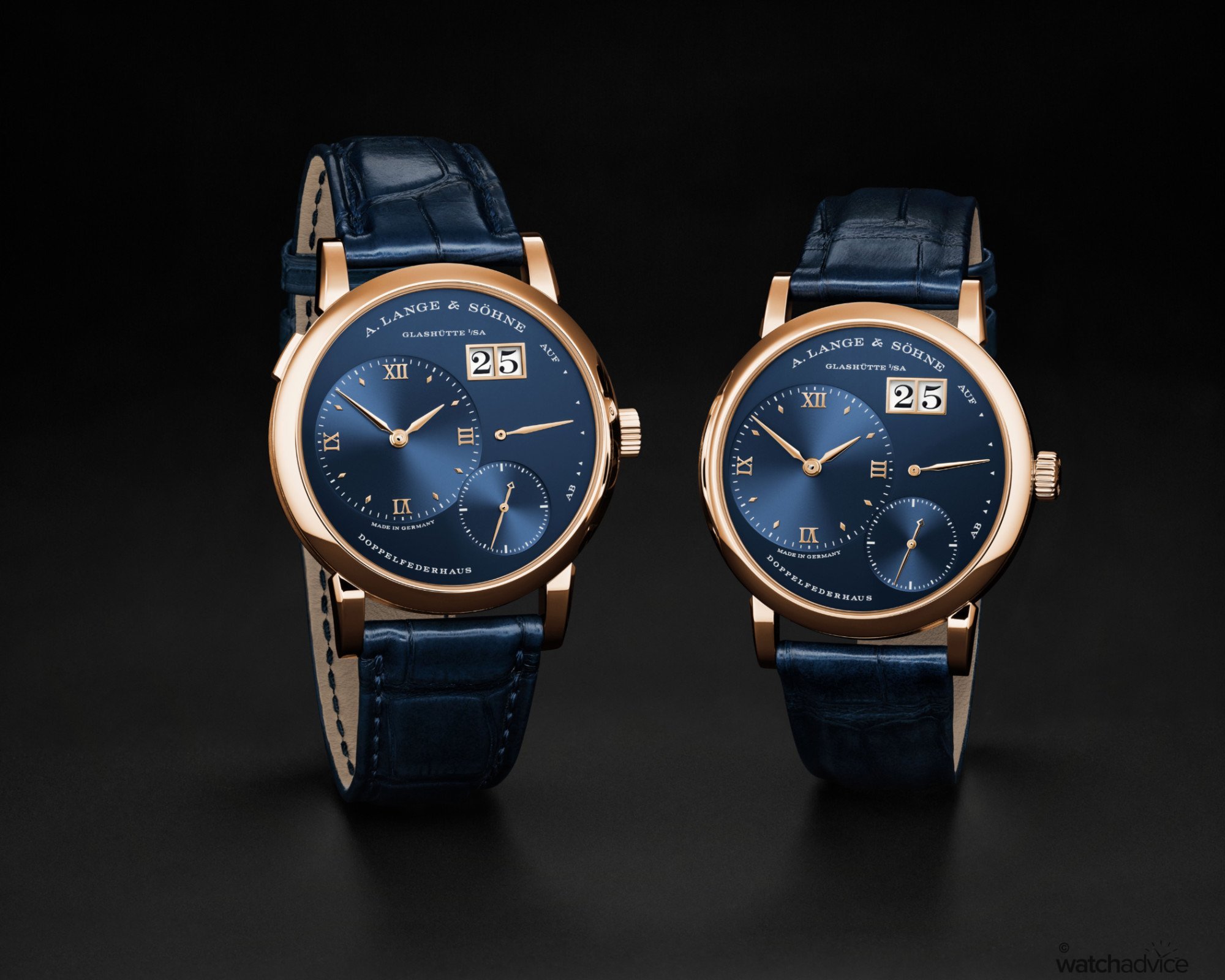
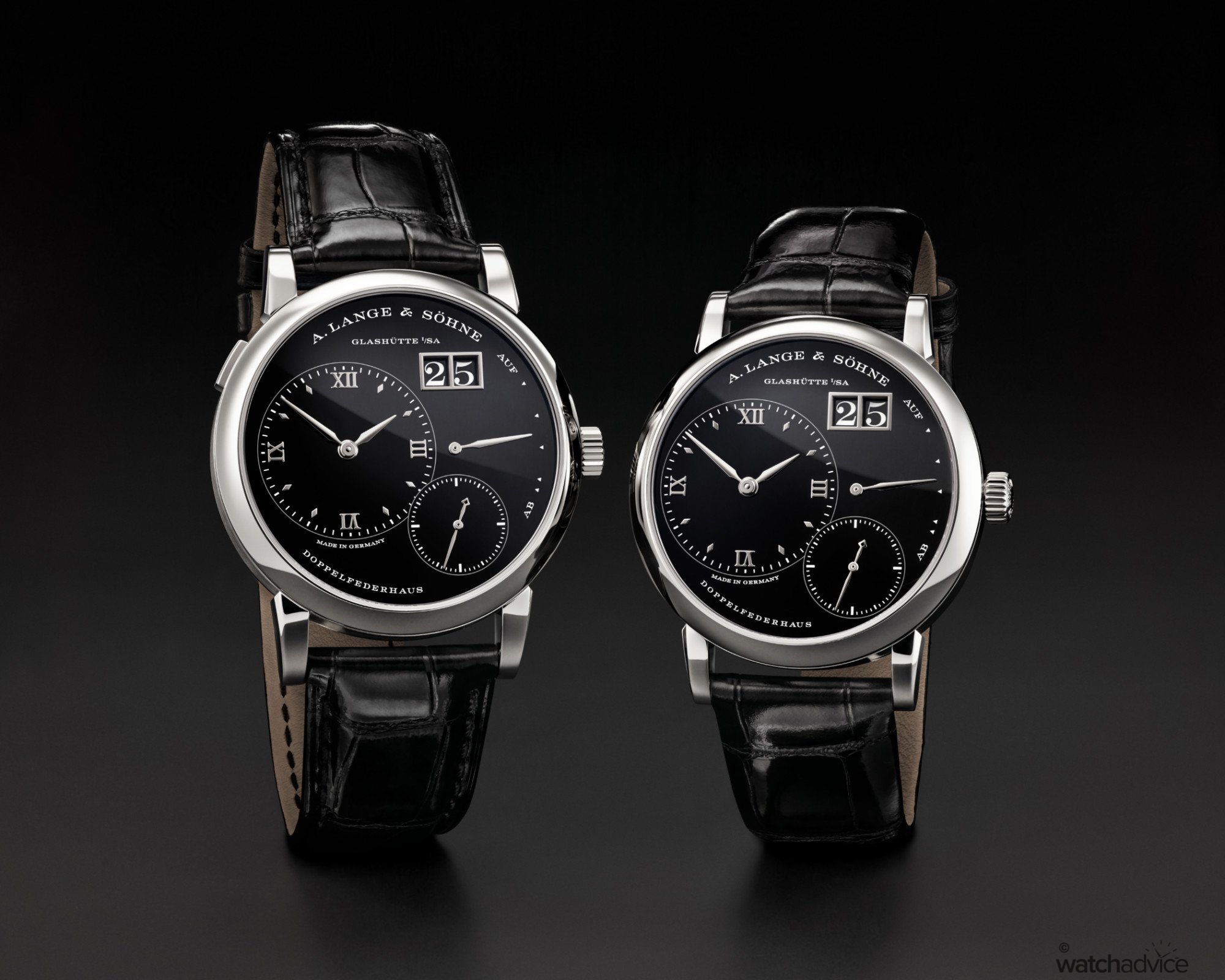
A. Lange & Söhne celebrated their Lange 1’s 30th anniversary on the 24th of October this year. As part of the celebration, the brand unveiled two new references for both the Lange 1 and Little Lange 1. Both the Lange 1 and Little Lange 1 come with the same design, however, there is dial colour and material changes.
A. Lange & Söhne have presented the Lange 1 and Little Lange 1 in either a 950 platinum case with a black dial, or a 750 pink gold case with a blue dial. While the black dial gives the more classic look, the blue on the pink gold looks stunning, with the colours completing the aesthetics of the dial beautifully.
Related Reading: Happy 30th Birthday to A. Lange & Söhne’s Lange 1!
A. Lange & Söhne Novelties Event In Sydney 2024
In late September 2024, A. Lange & Söhne held an intimate gathering at their Sydney Boutique to showcase the novelties from Watches & Wonder 2024. Watch Advice attended the event, and was able to get a deeper insight into A. Lange & Söhne’s story, while also celebrating Lange 1’s 30th Anniversary and the Datographs 25th Anniversary.
To start the event, Joan Tay, Marketing Manager for A. Lange & Söhne Asia Pacific, welcomed us and then introduced Nicolas Gong, A. Lange & Söhne’s Managing Director, Asia Pacific. Nicolas gave us a brief overview of the brand’s history and heritage, both modern and its roots. We had the pleasure of sitting down with Nicolas before the event and getting his perspective on all things Lange!
Related Reading: EVENTS: Getting To Know A. Lange & Söhne Up Close In Sydney – Photo Report
A. Lange & Söhne showcased some of the current Lange 1 models during this novelties event. While this didn’t include the 30th-anniversary Lange 1 timepieces, they showcased some incredible pieces from the Lange 1 collection, which showed the stunning guilloche finishing that the early Lange 1 models started with. As shown below, the Lange 1 models also featured complications, such as the Lange 1 Moon Phase and the Lange 1 Time Zone.
A. Lange & Söhne – Lange 1 Time Zone
Reference 136.029
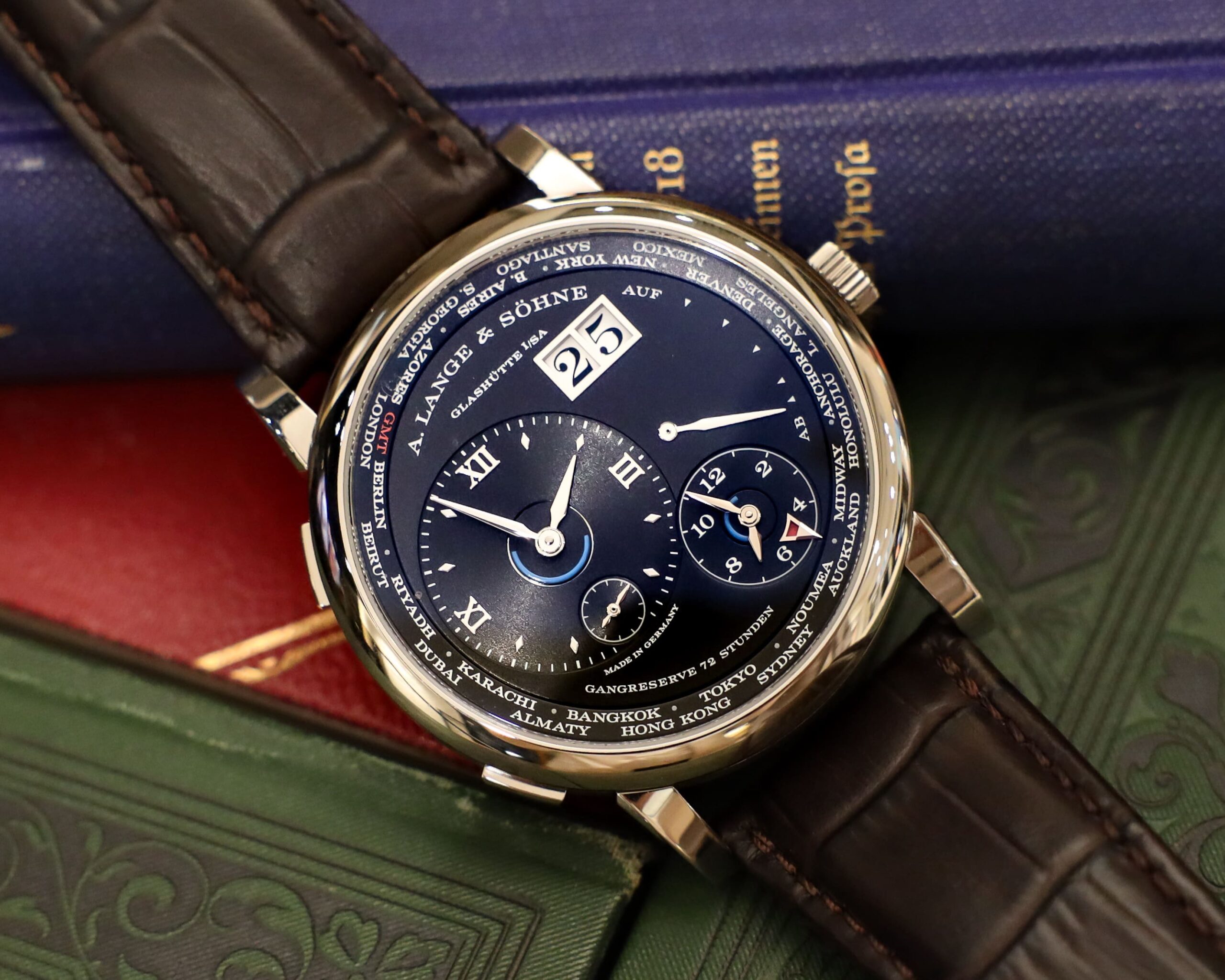
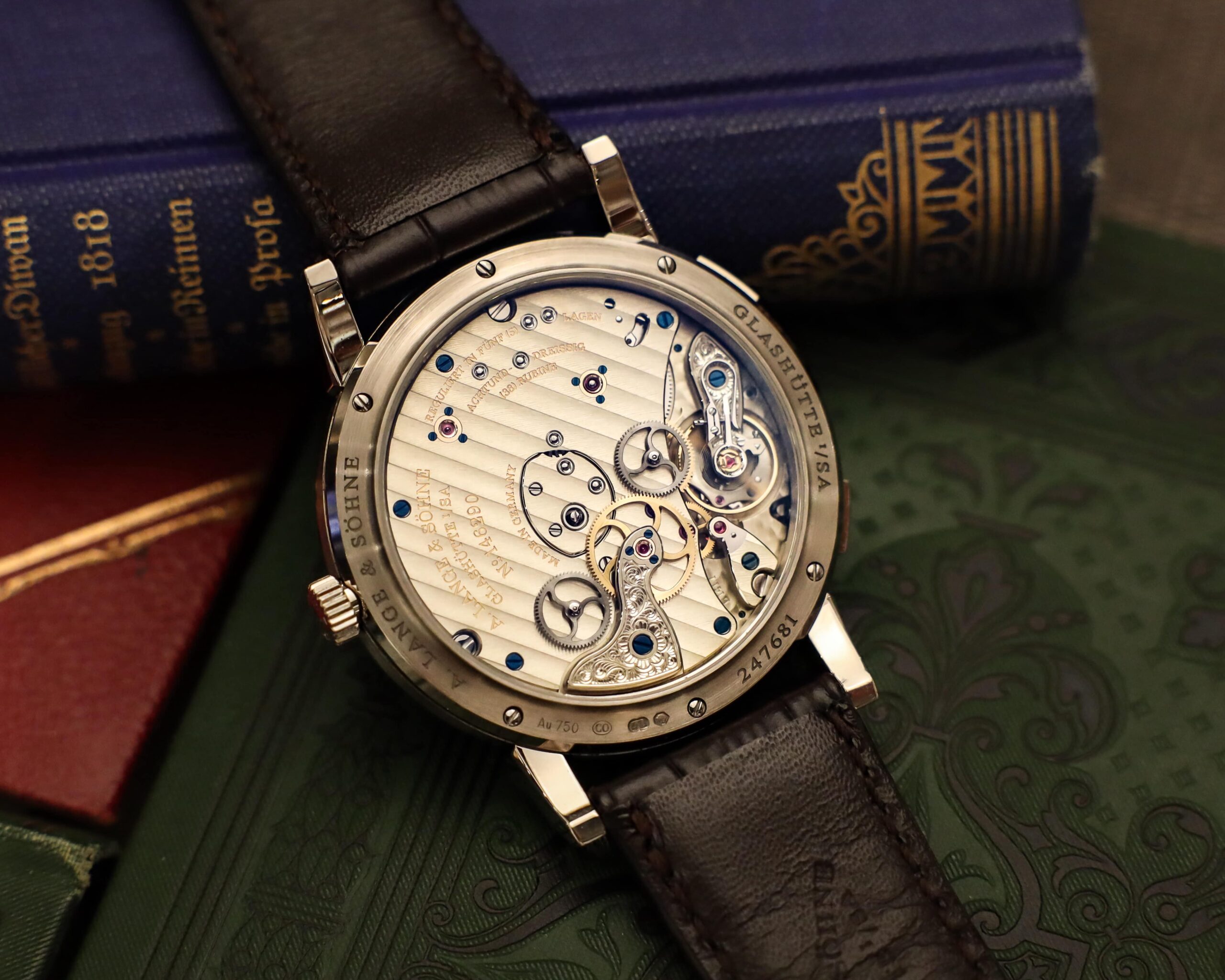
A. Lange & Söhne – Grand Lange 1
Reference 137.033
A. Lange & Söhne – Lange 1 Moon Phase
Reference 192.029
A. Lange & Söhne – Little Lange 1 Moon Phase
Reference 182.030
A. Lange & Söhne – Little Lange 1
Reference 181.038
The Lange 1 is a great example of how heritage and innovation can be found in a singular timepiece. Since its humble beginnings in 1994, the Lange 1 is now THE iconic model of A. Lange & Söhne. It is the timepiece that put the brand back on the map. After almost 50 years of non-existence and A. Lange & Söhne unable to create beautiful timepieces for the world of Horology, the Lange 1 came along and kick-started the brand back to life.
The Lange 1’s distinctive design is what sets it apart from its competitors. As we know, the Lange 1 was introduced when the Swiss watchmaking industry was getting back into full swing after the Quartz Crisis. Some of the watches coming out of the Swiss watchmakers were the likes of the Audemars Piguet Royal Oak, the IWC Ingenieur, IWC Portugieser, the Panerai Luminor, Jager-LeCoultre Master Control, Vacheron Constantin Overseas and the Breguet Classique to name a few. The list goes on, but this is what the German watch manufacturer A. Lange & Söhne had to compete with after just getting the brand restarted!
To compete with these industry giants, A. Lange & Söhne had to create something truly special. They certainly achieved that and much more, as today, the Lange 1 is not only a flagship model but also a statement of enduring design. It also represents a bridge between the past and the future. Simply put, the Lange 1 is not just a watch. It’s a timepiece that is a testament to resilience and rebirth. The iconic design and craftsmanship embody A. Lange & Söhne’s revival, showing that fresh beginnings can pave the way for an extraordinary future, no matter the past.


